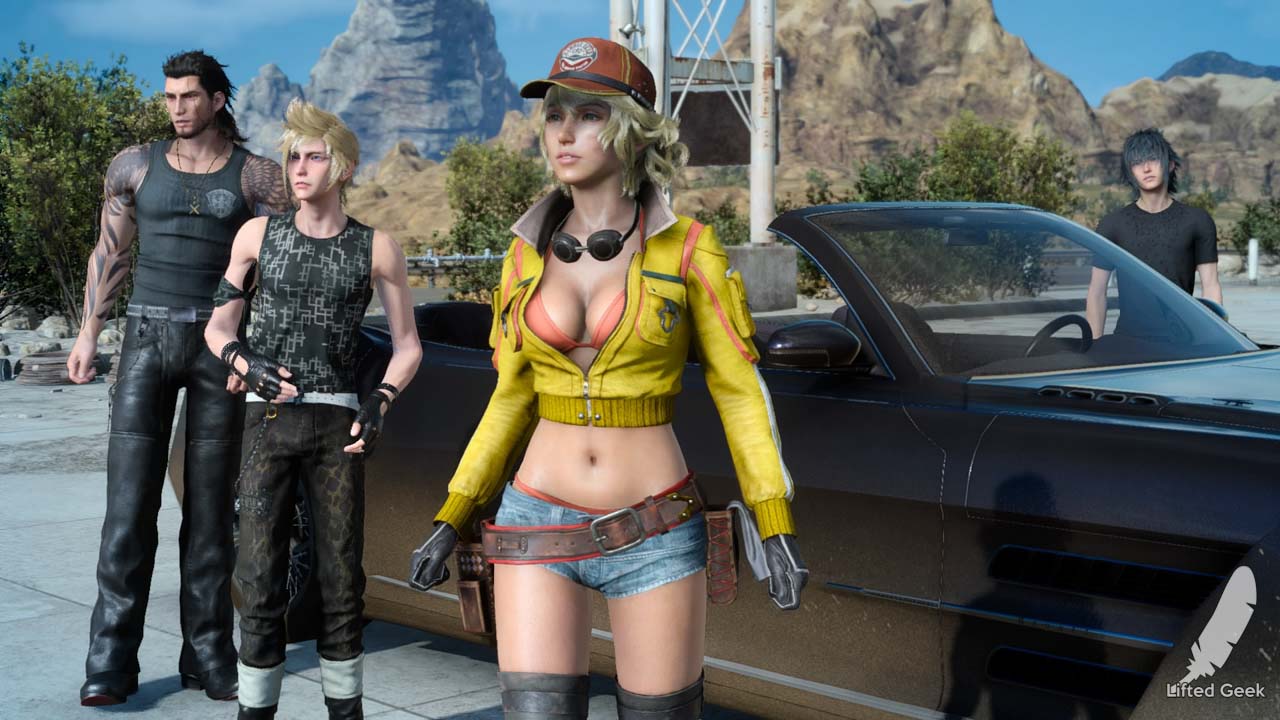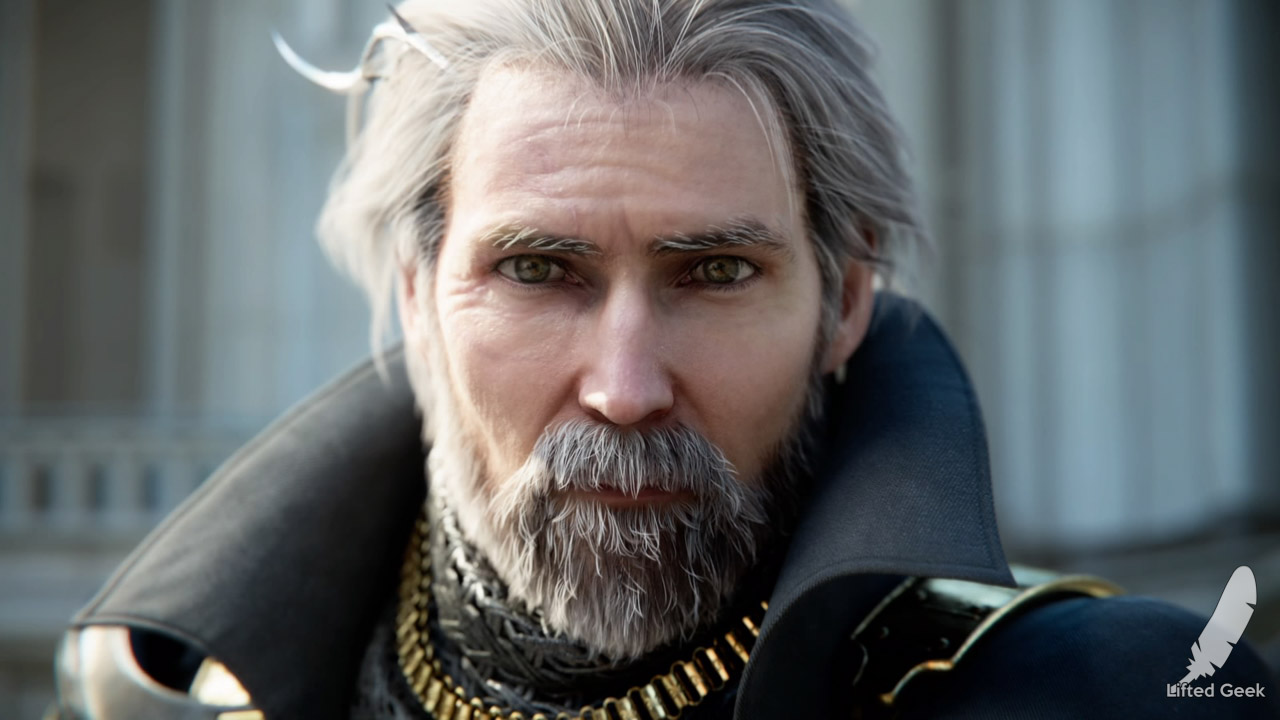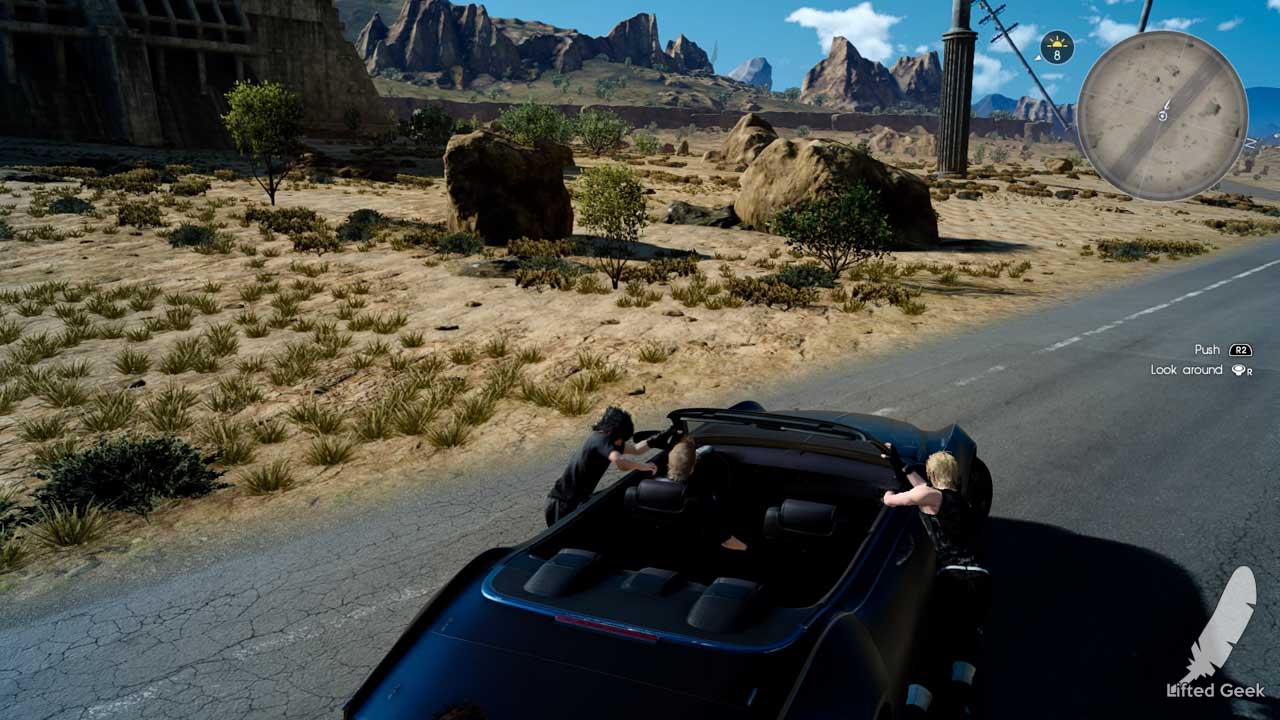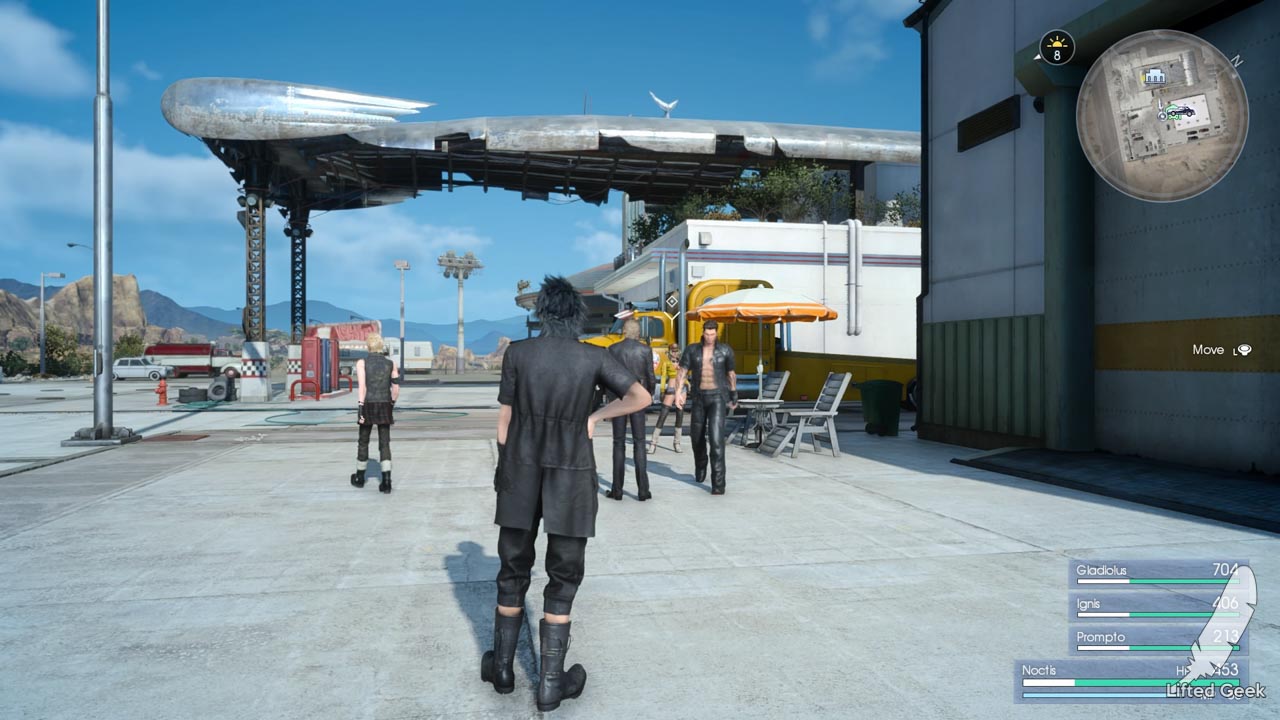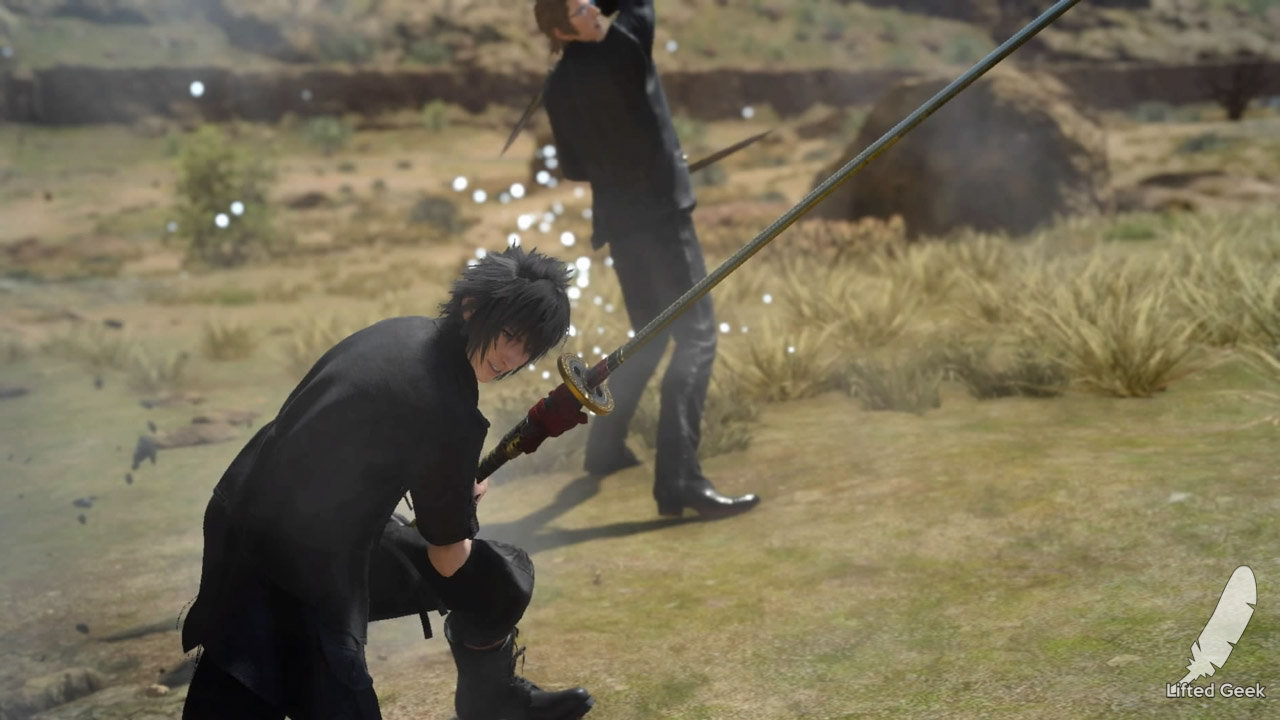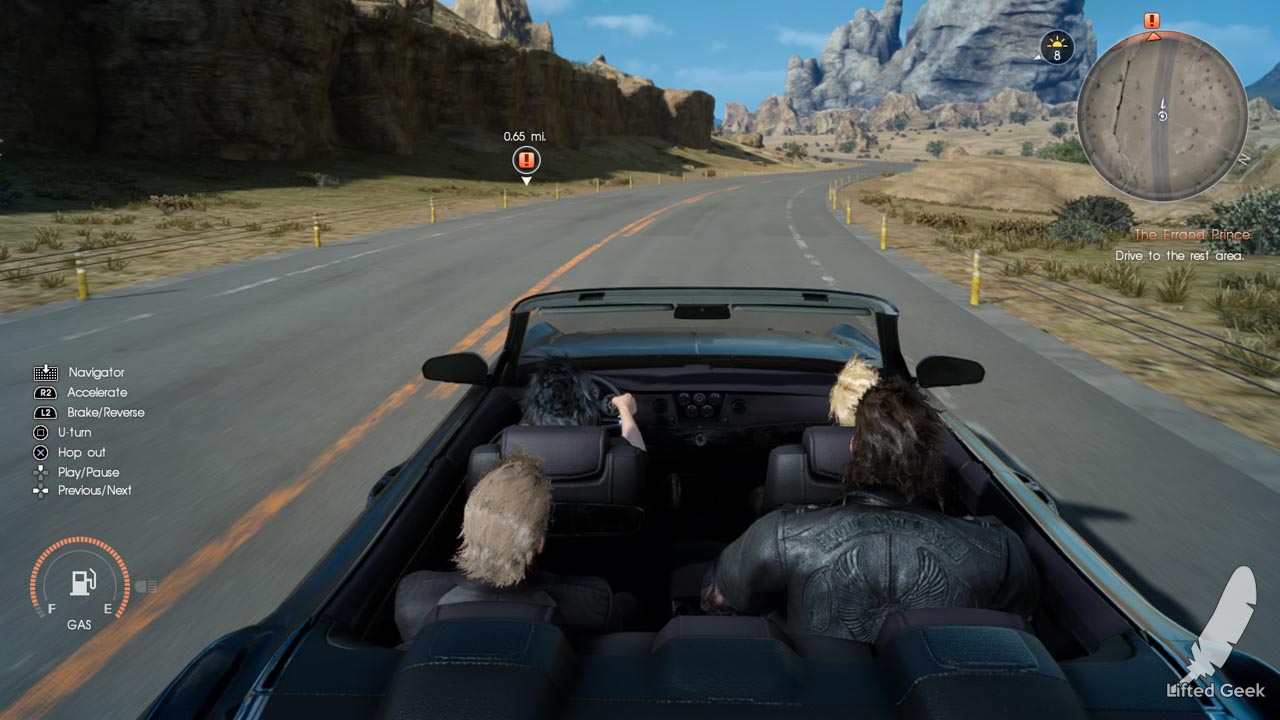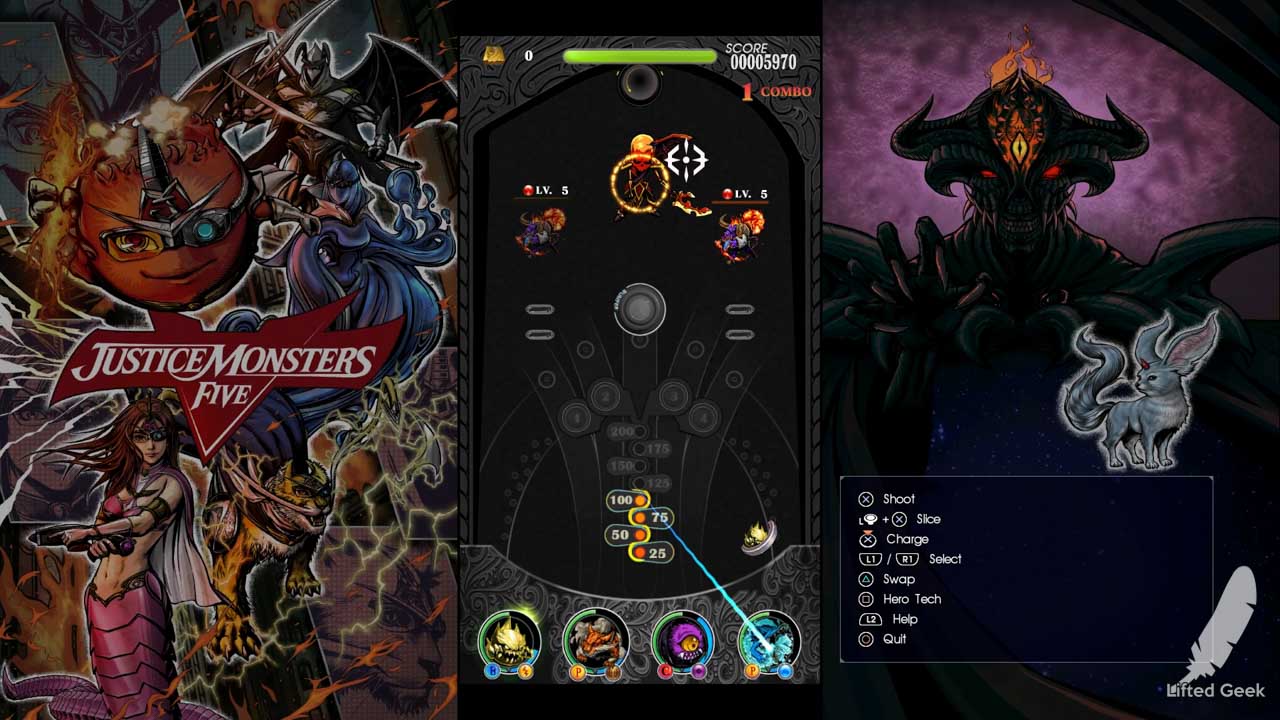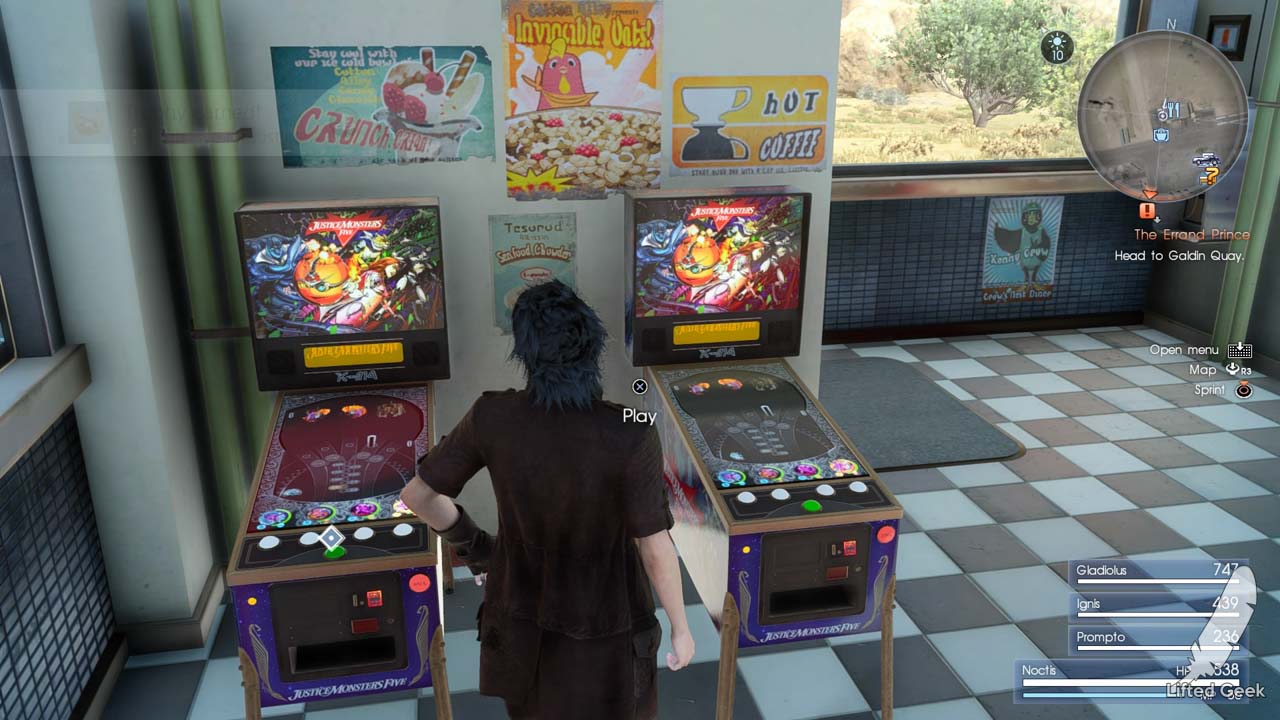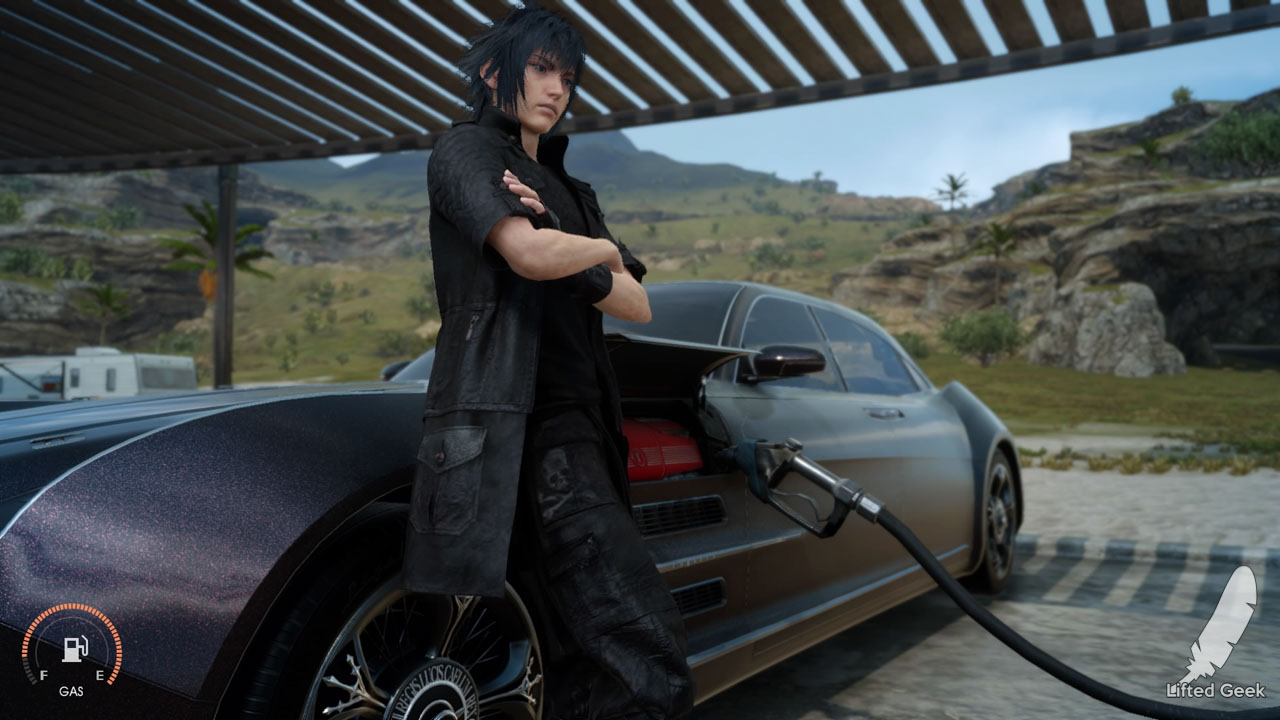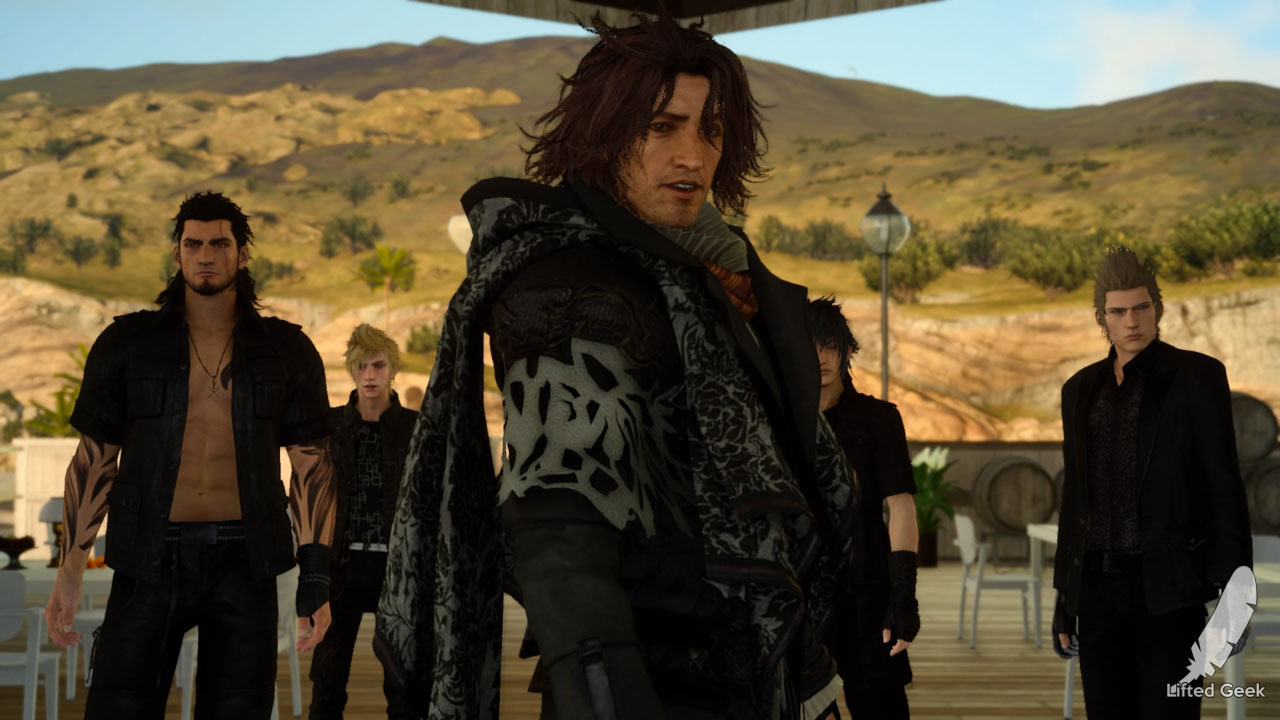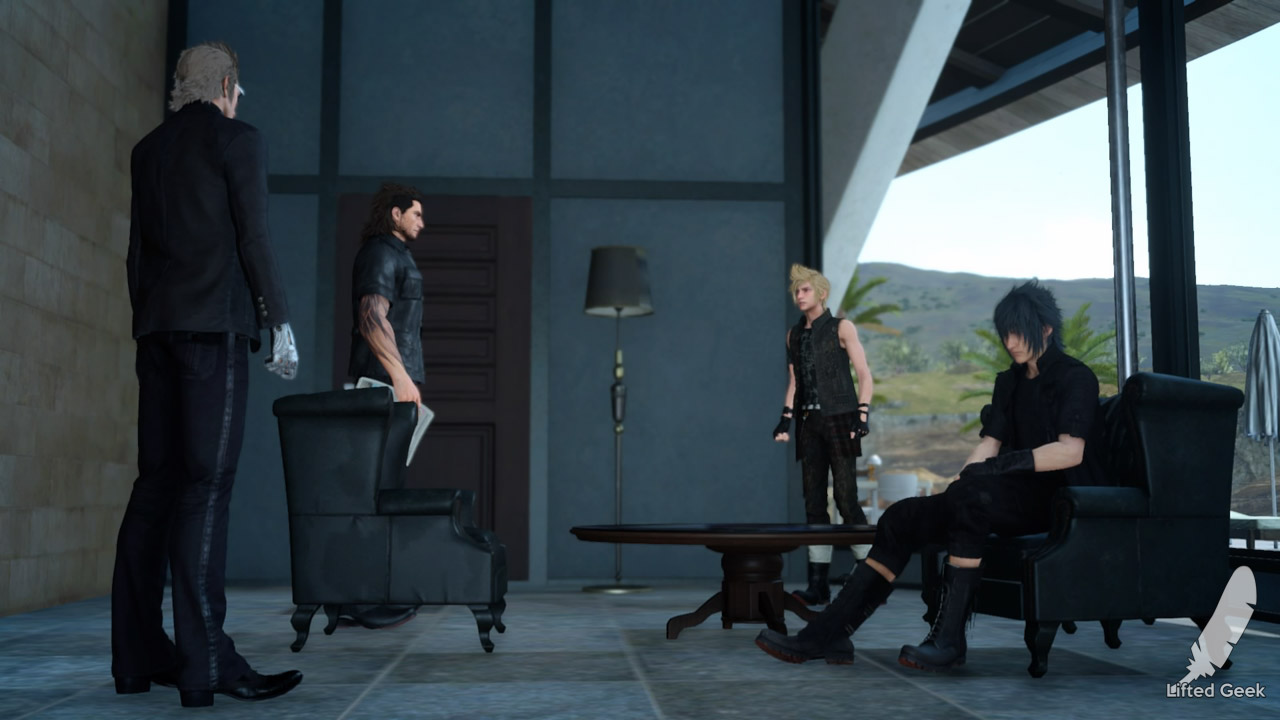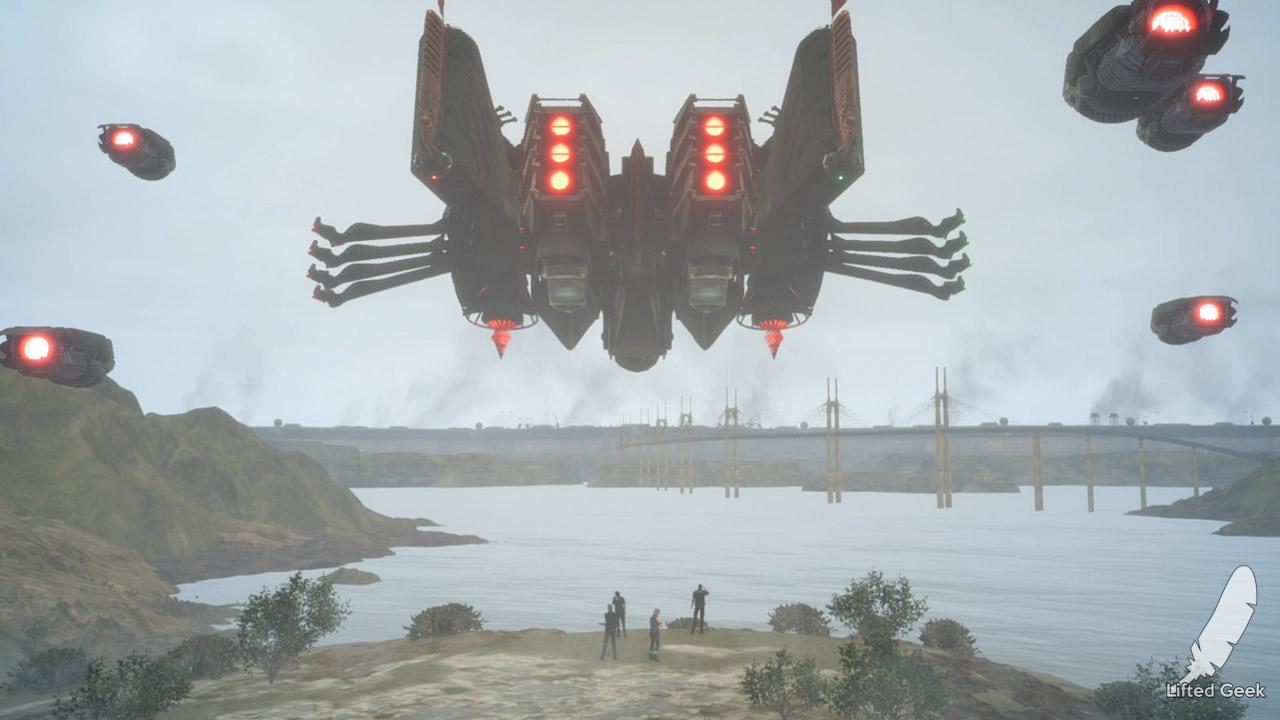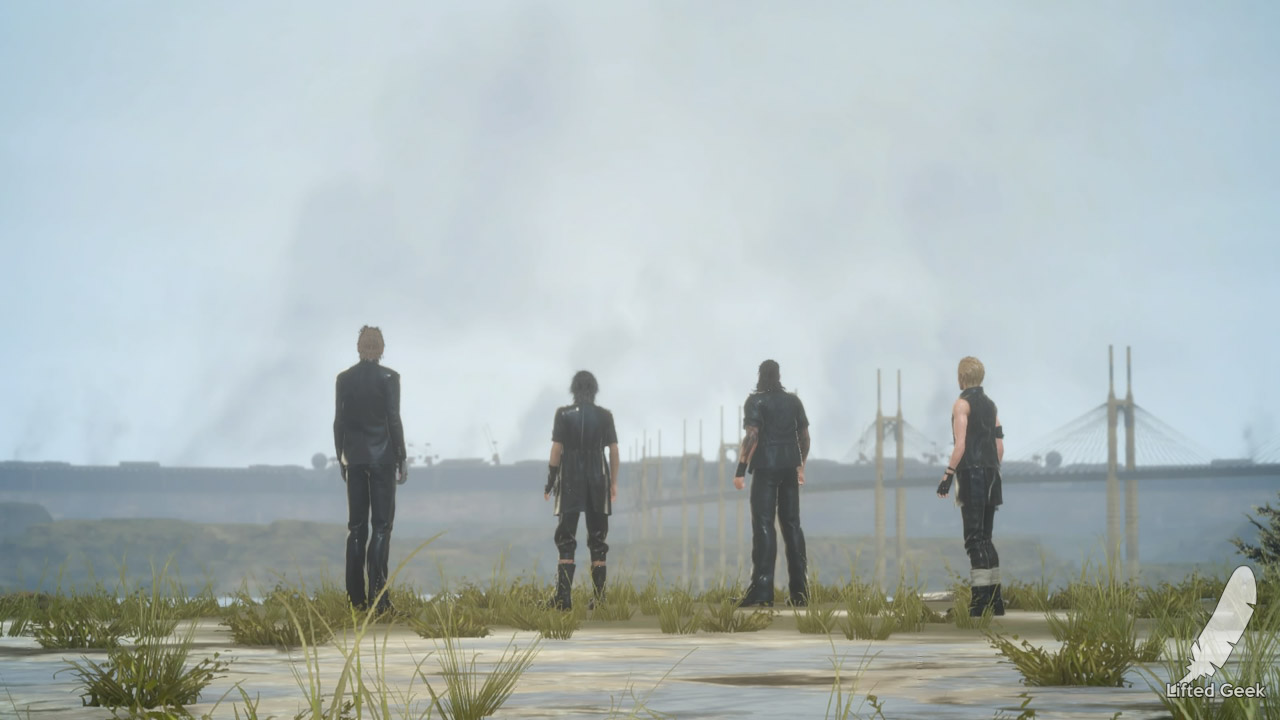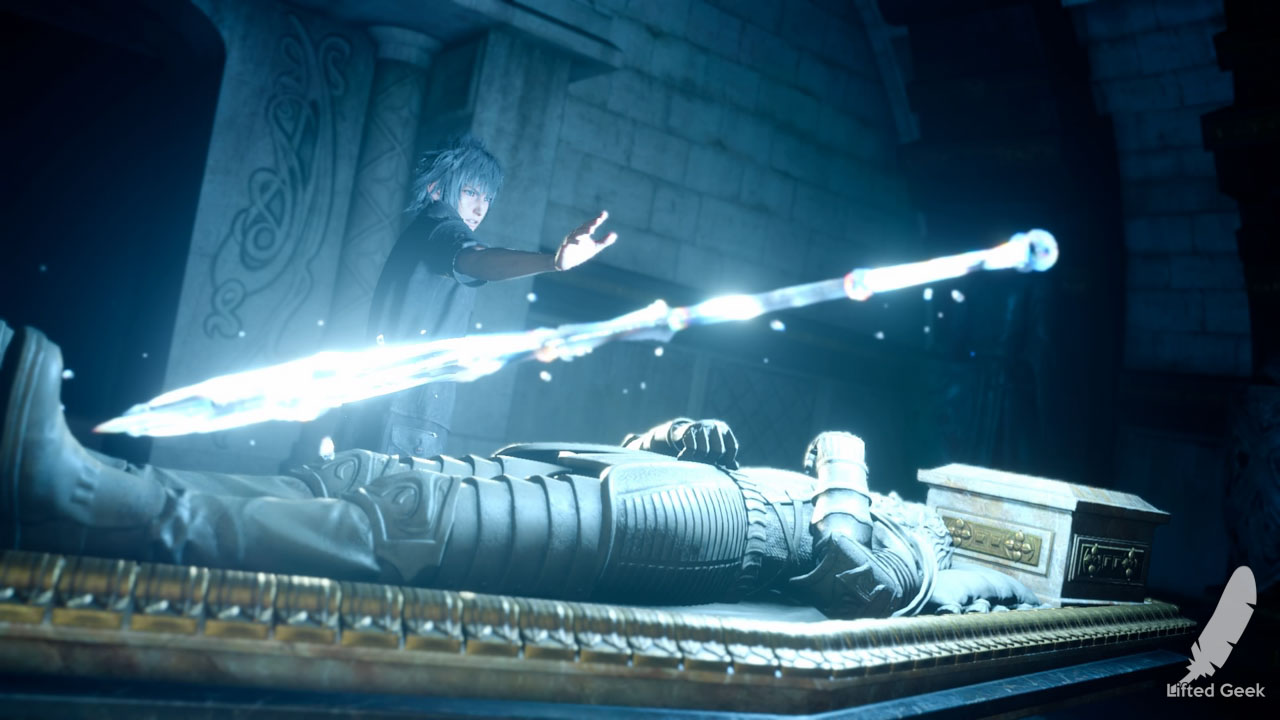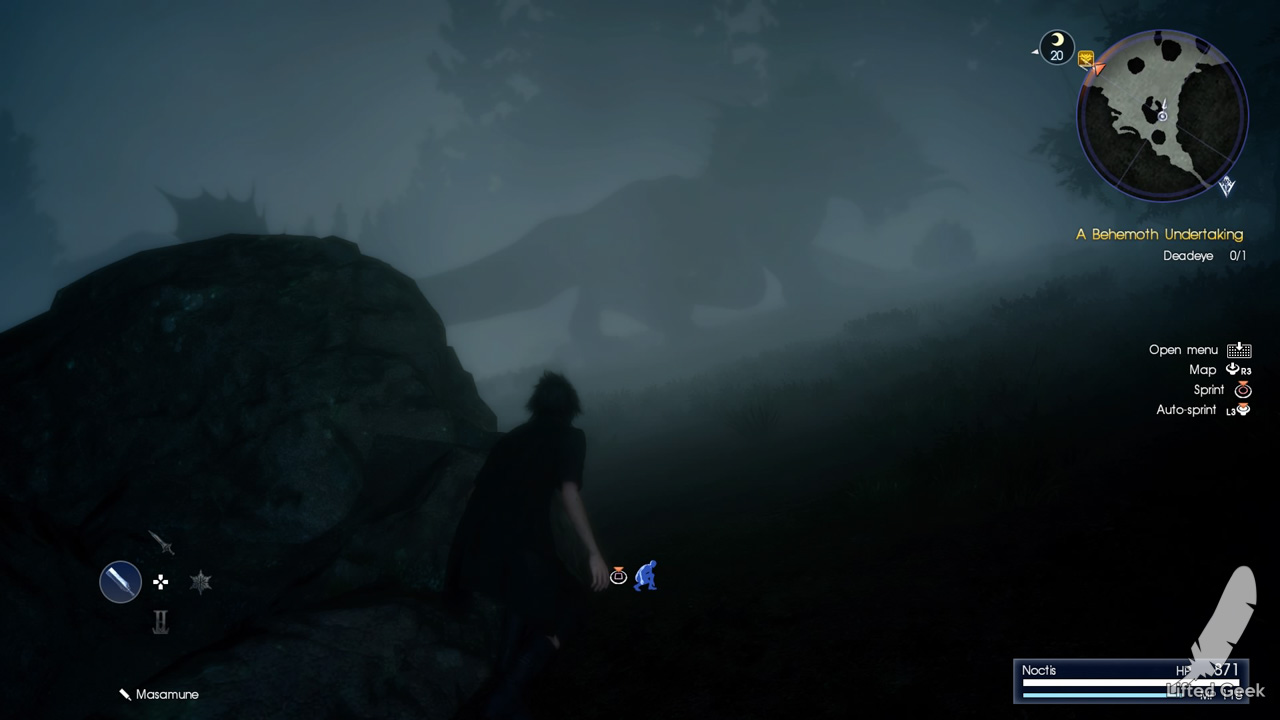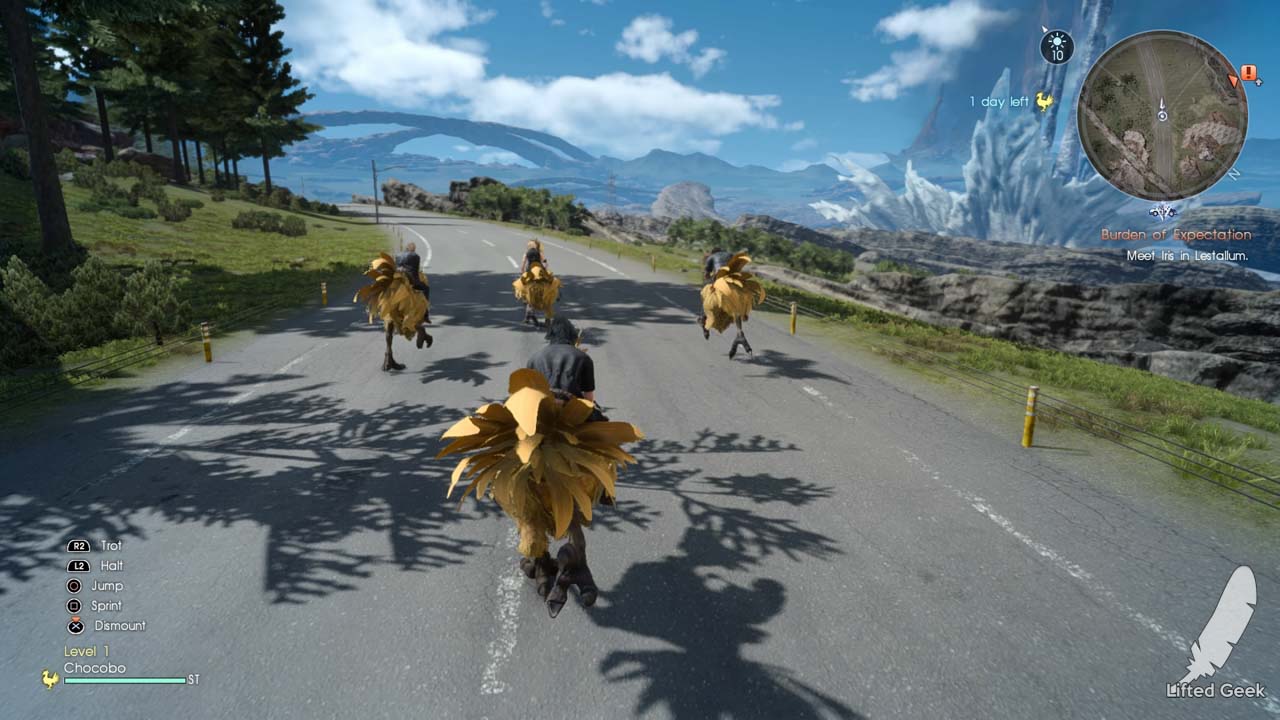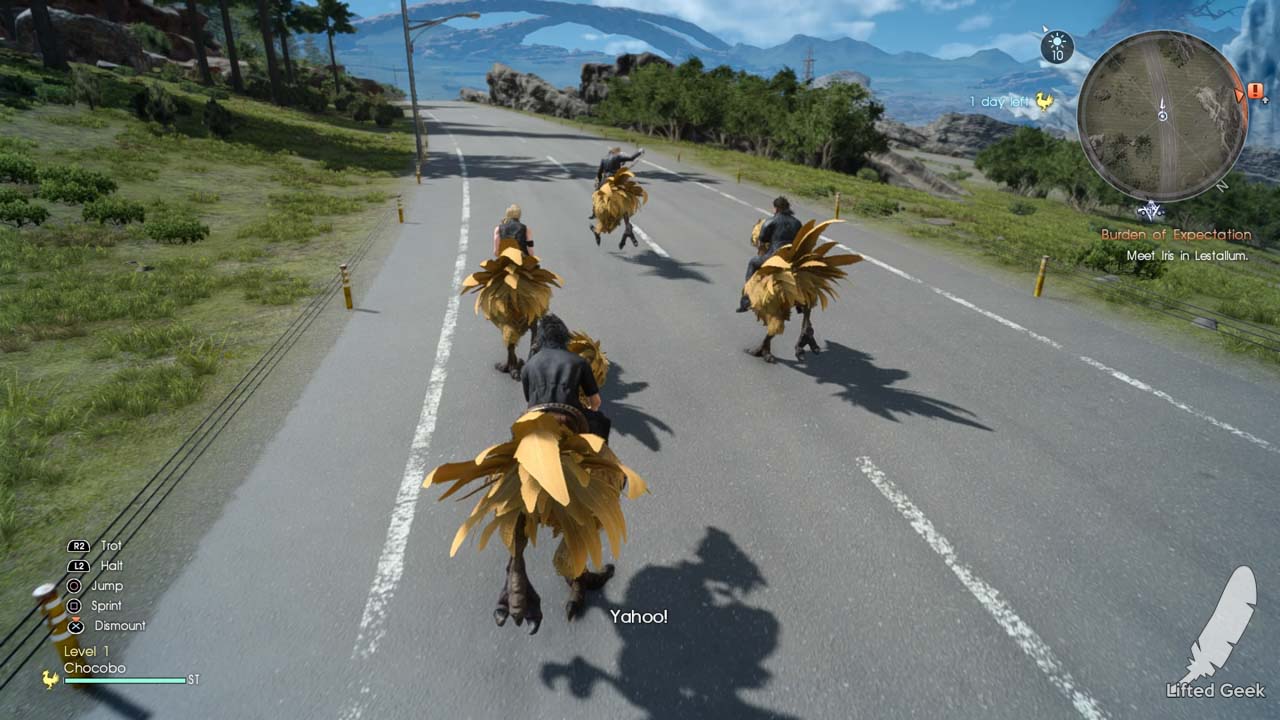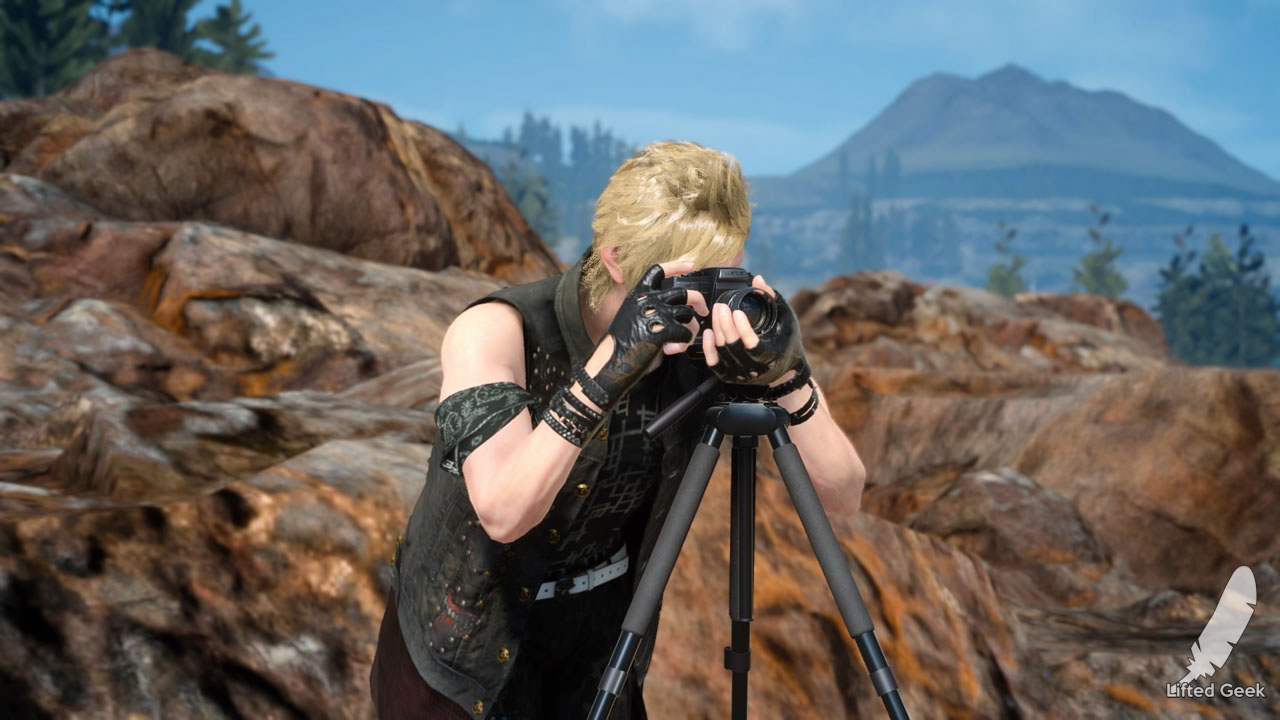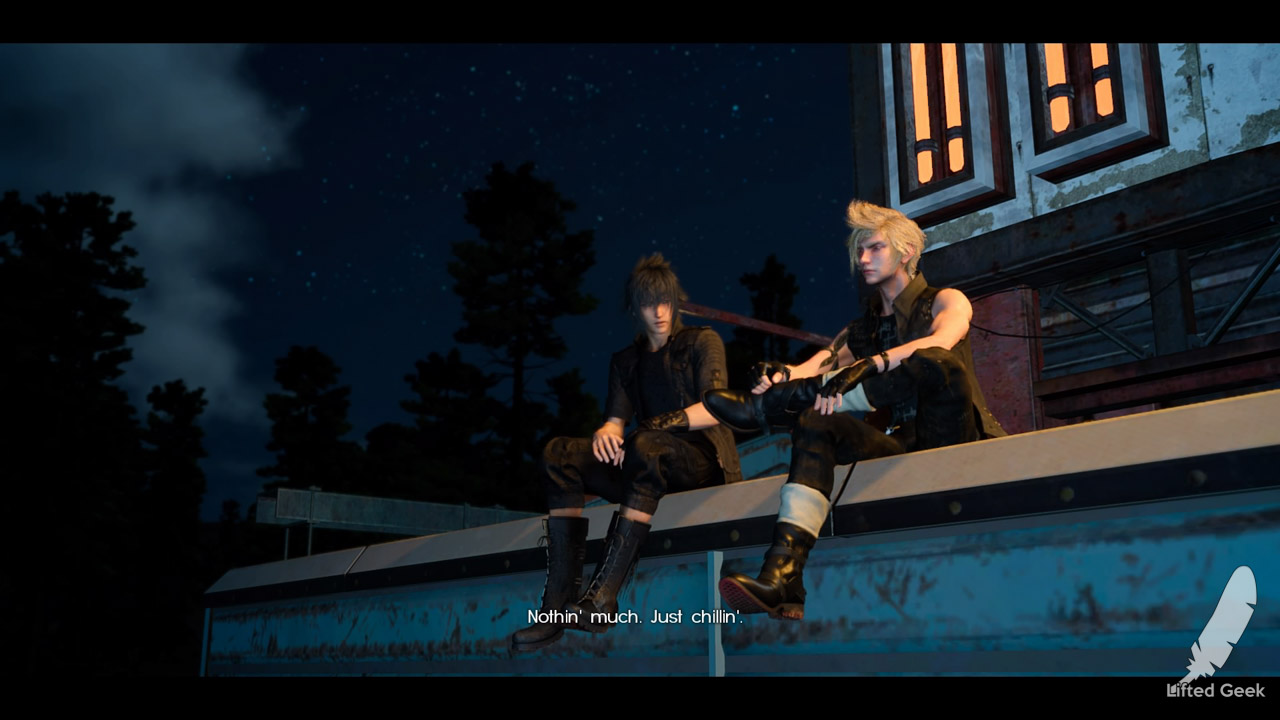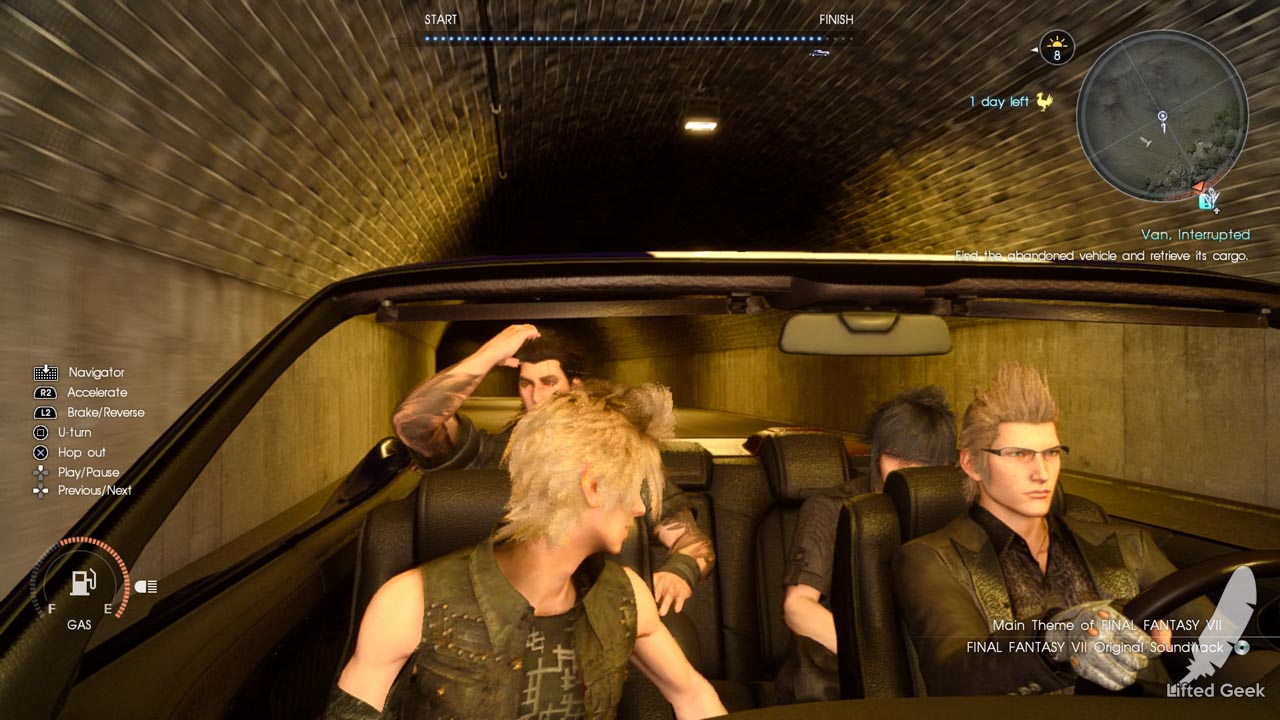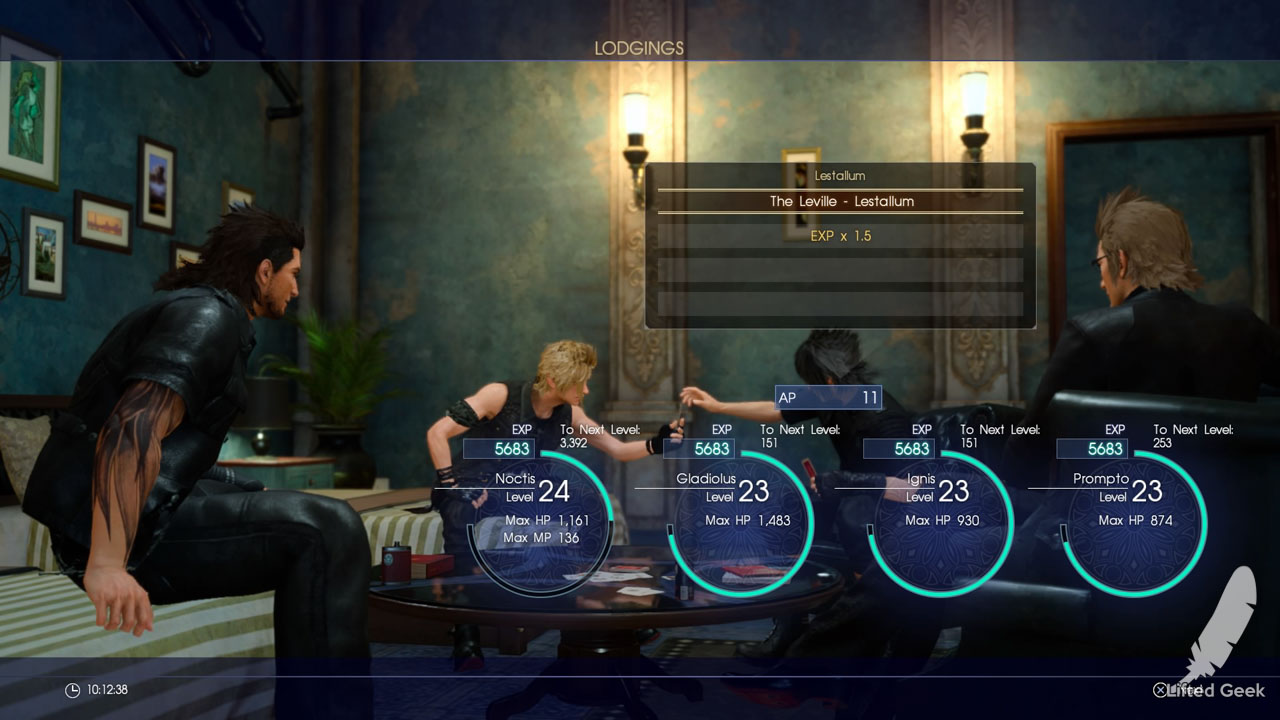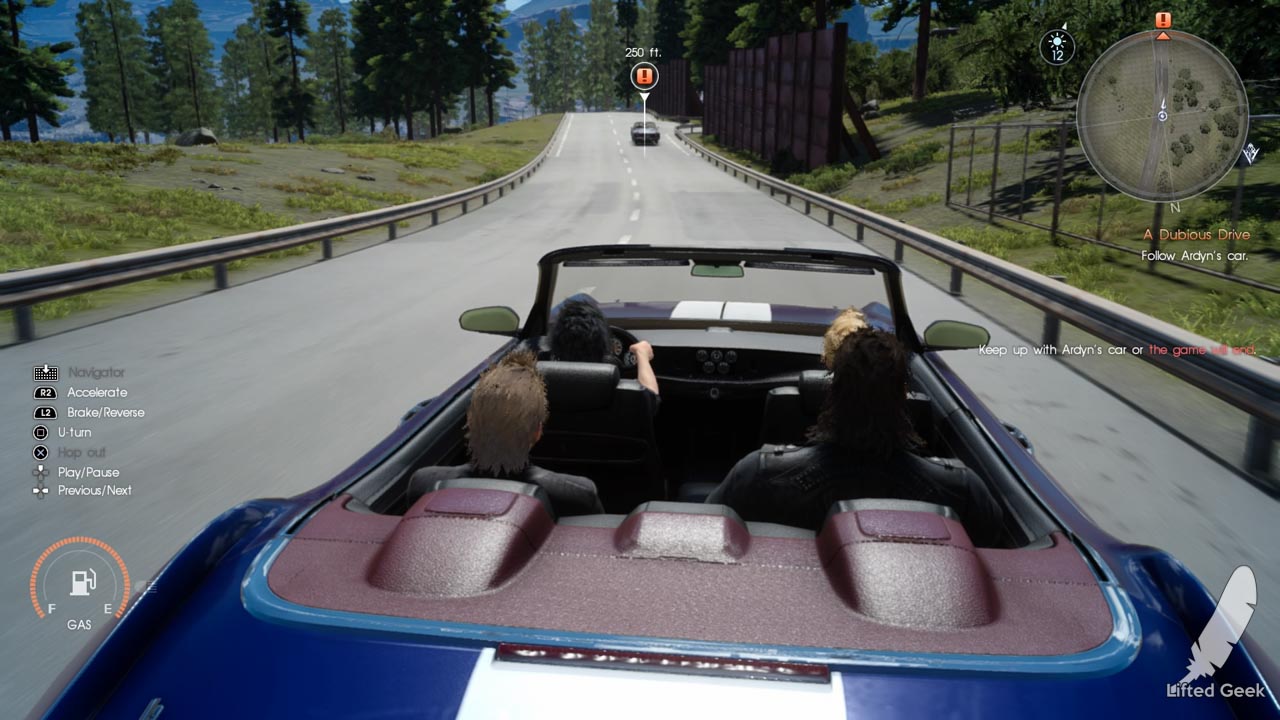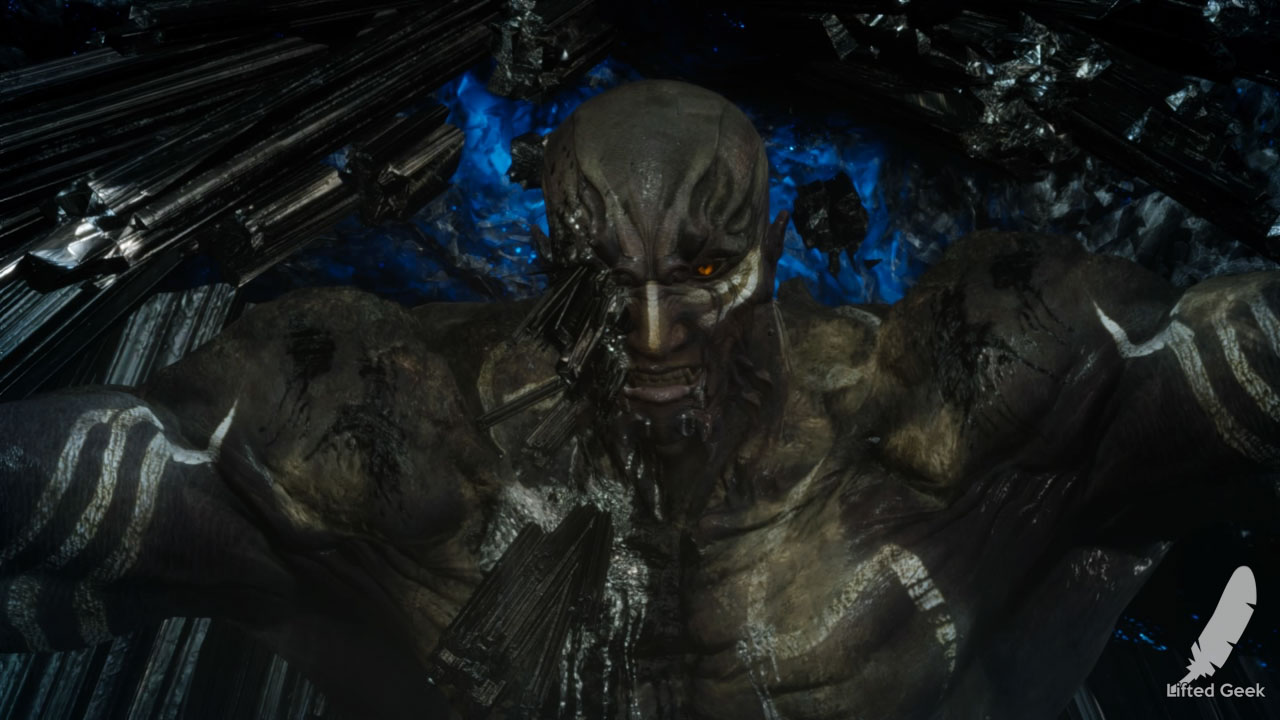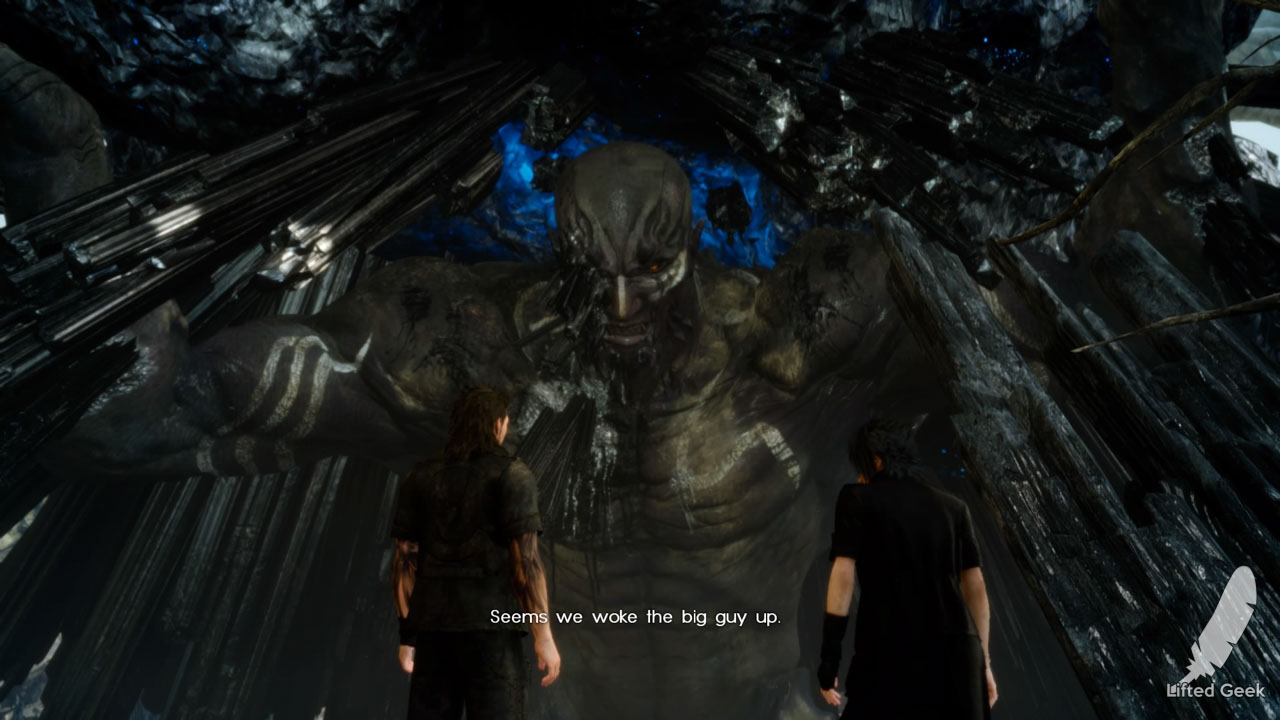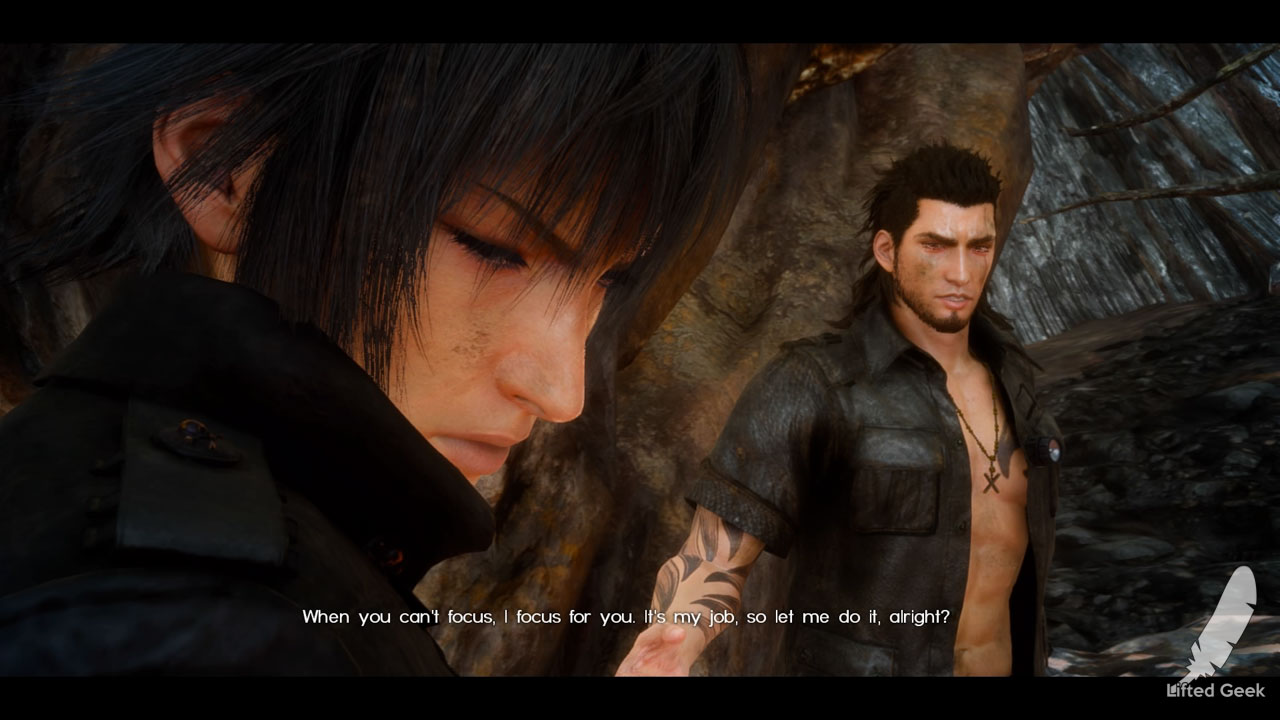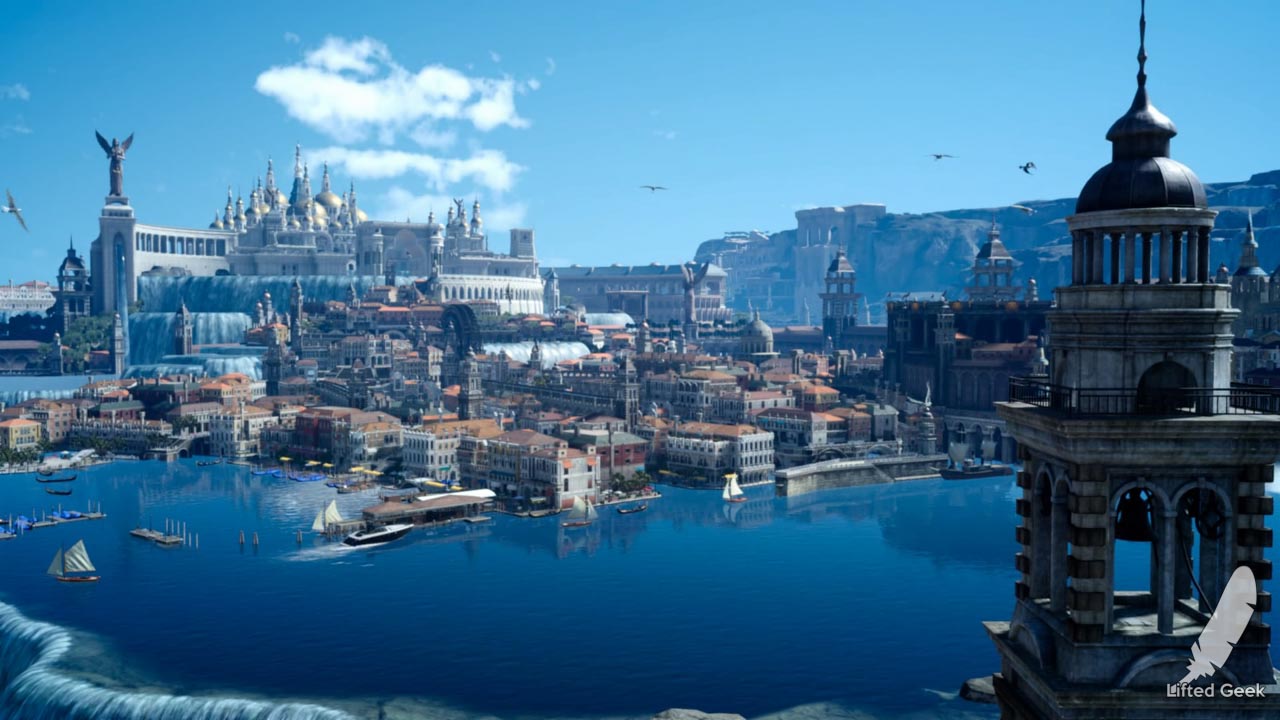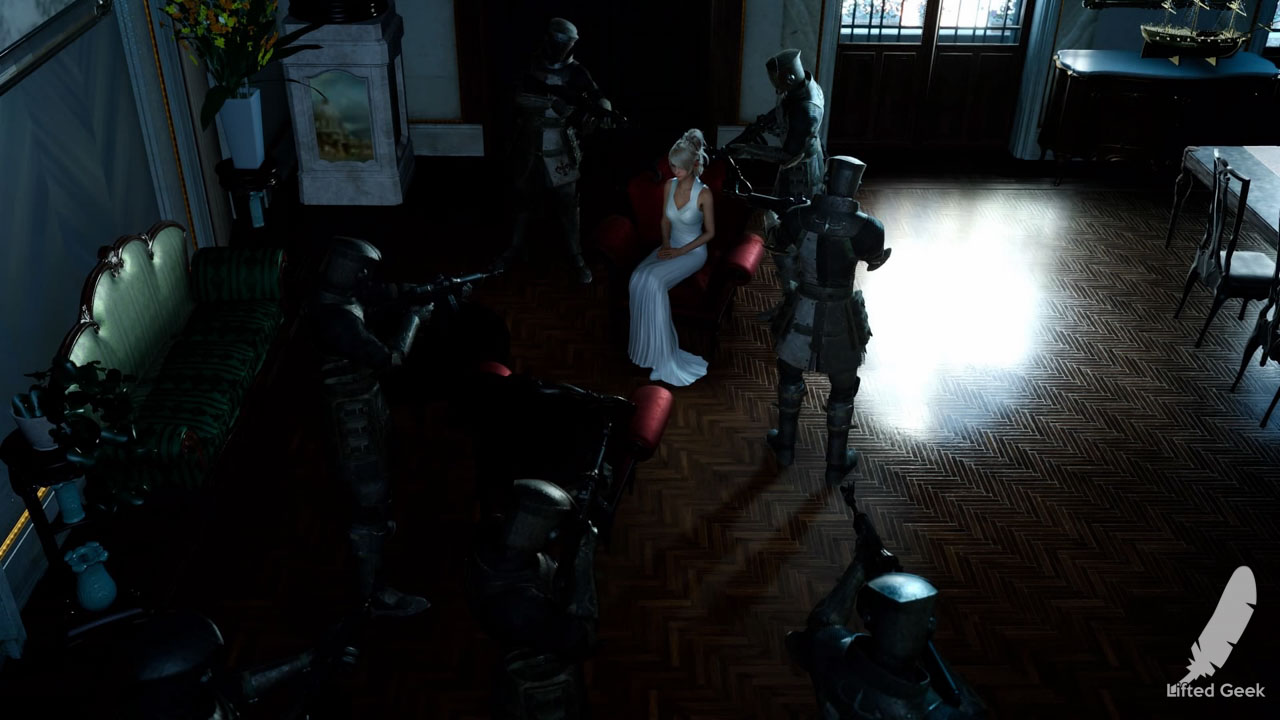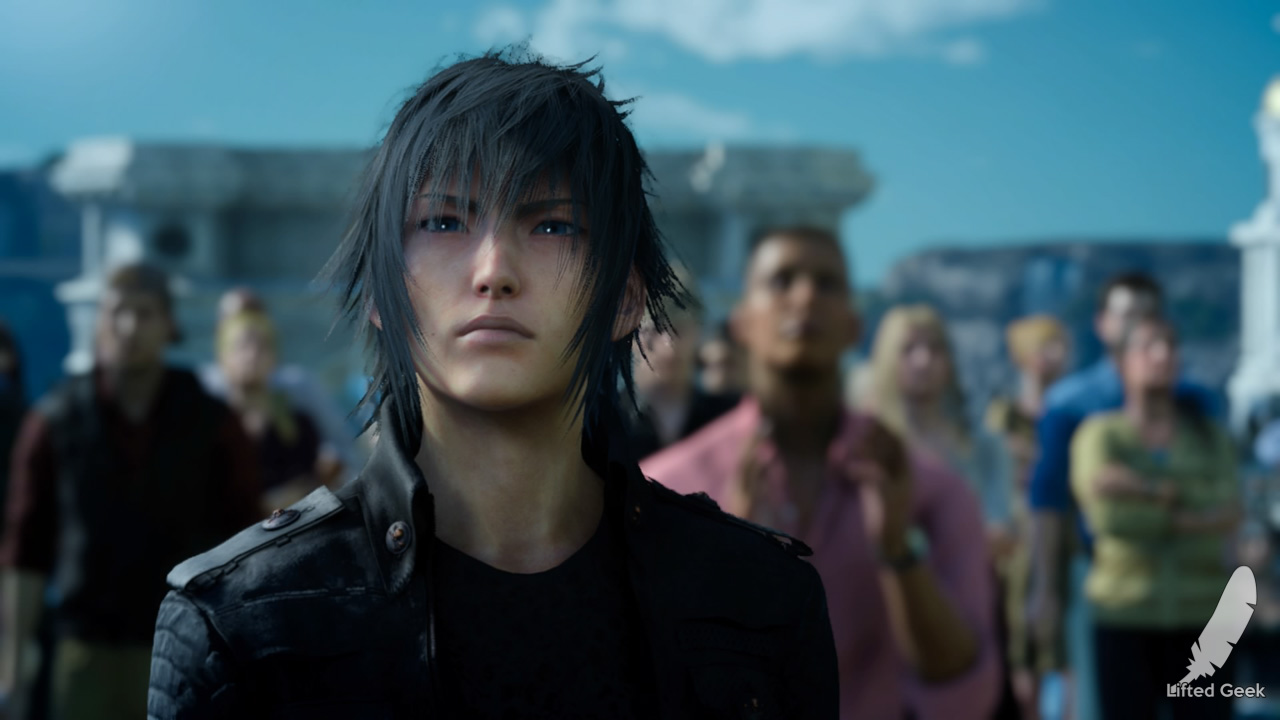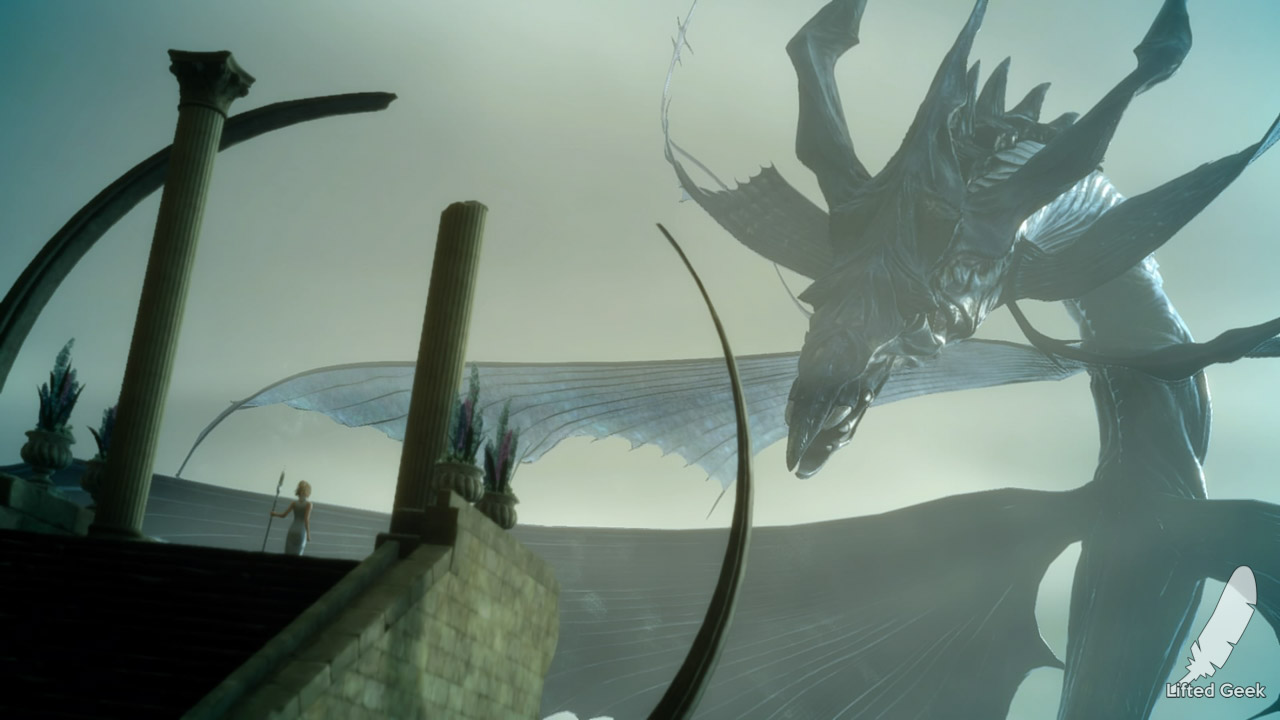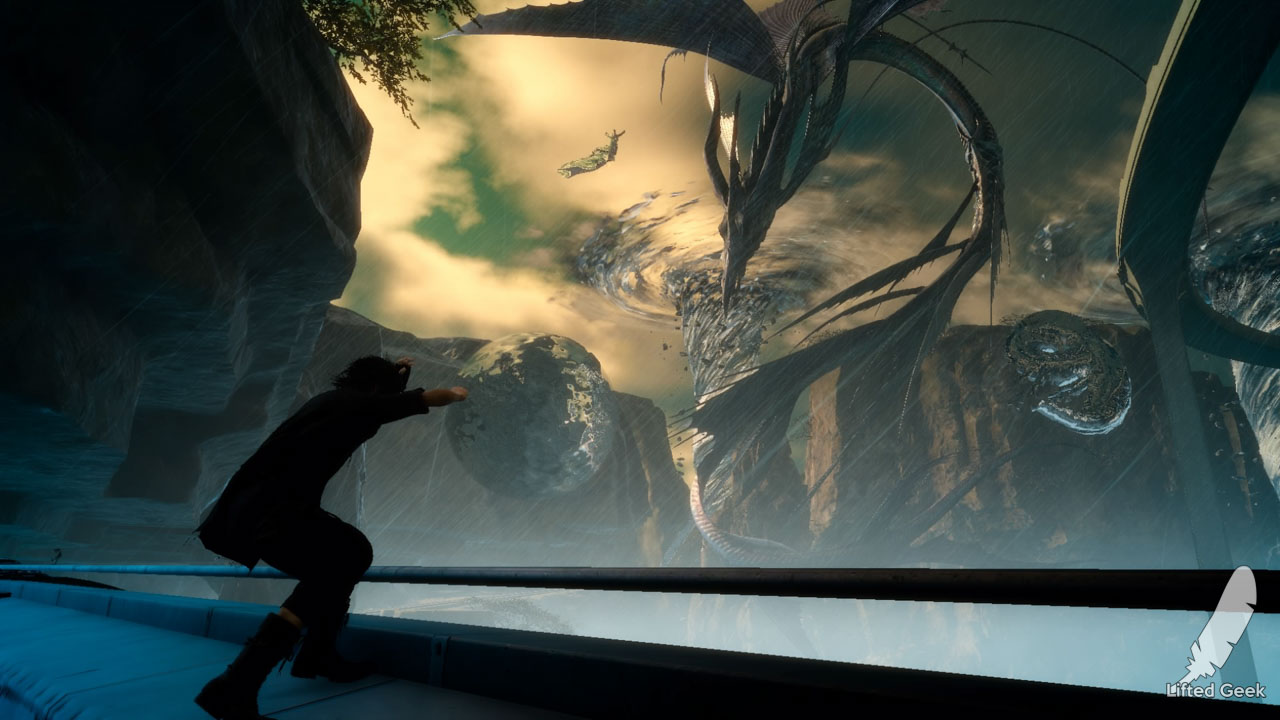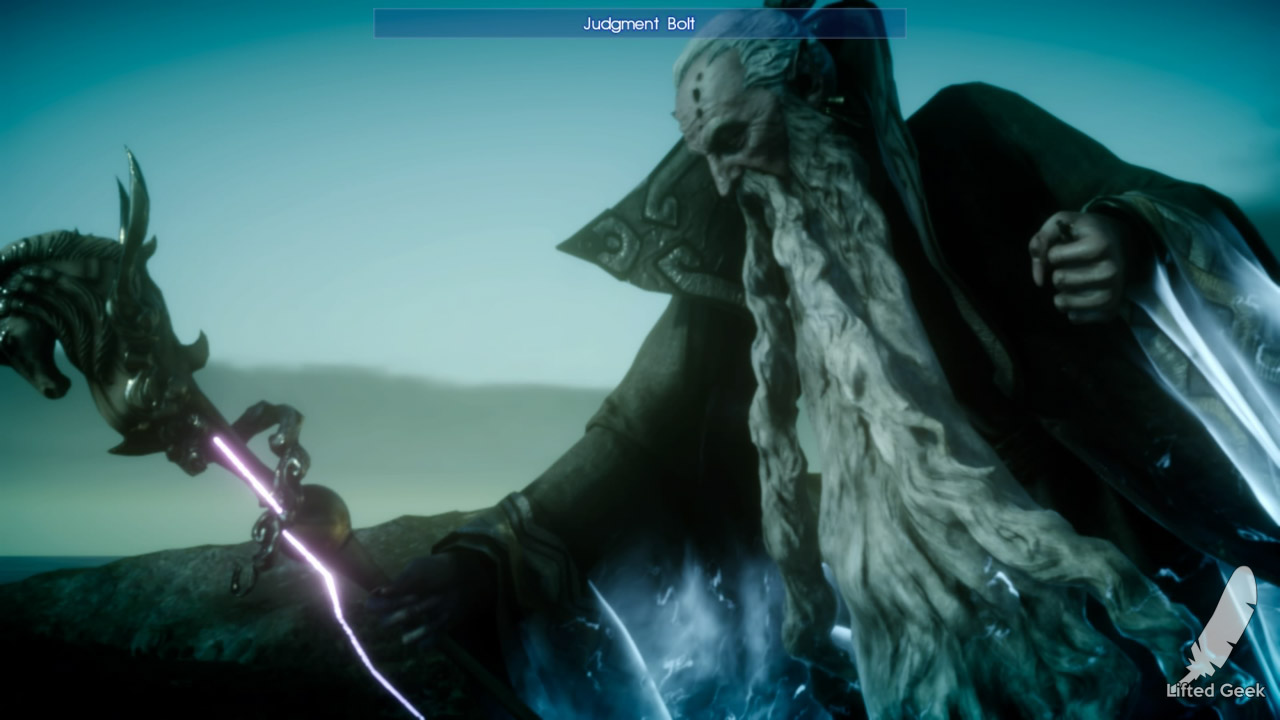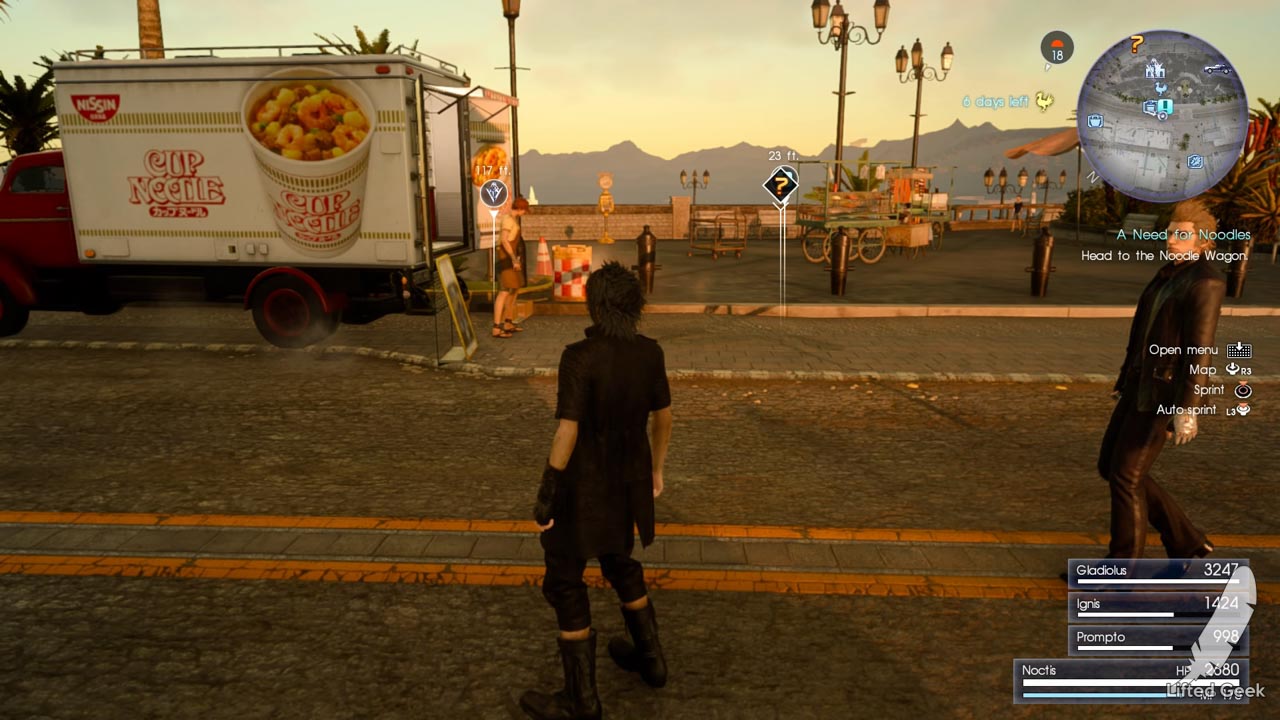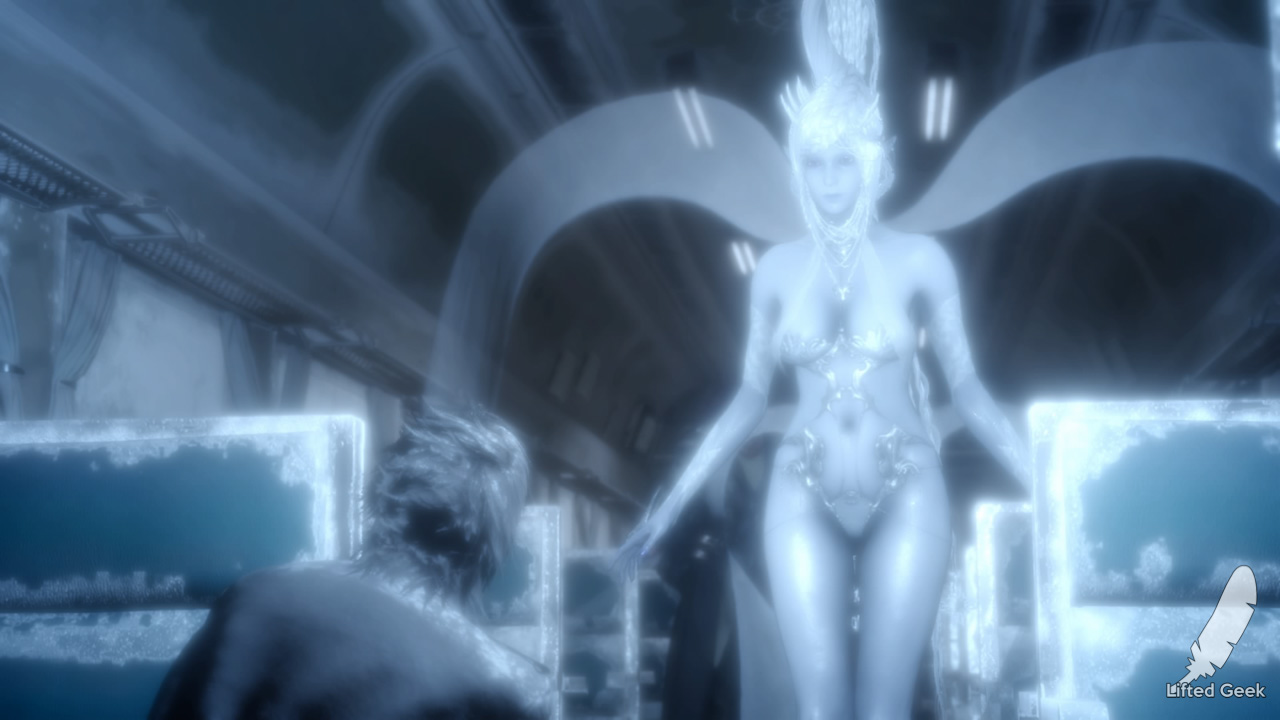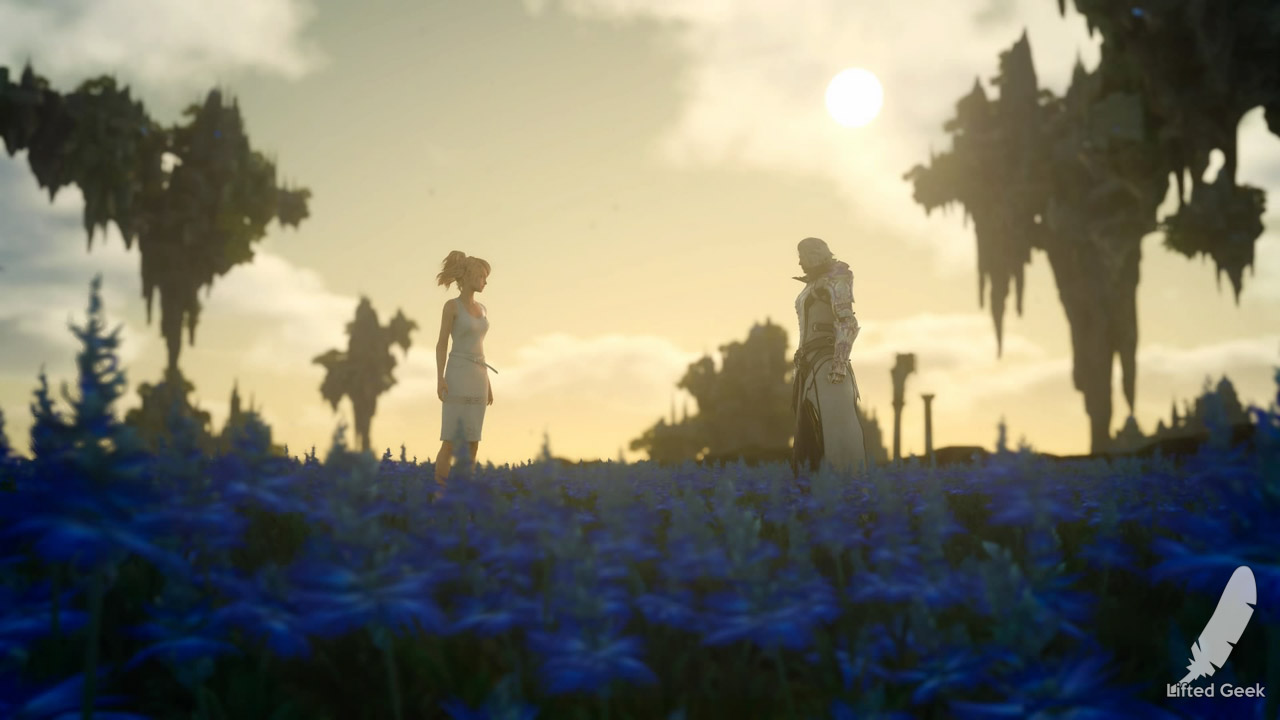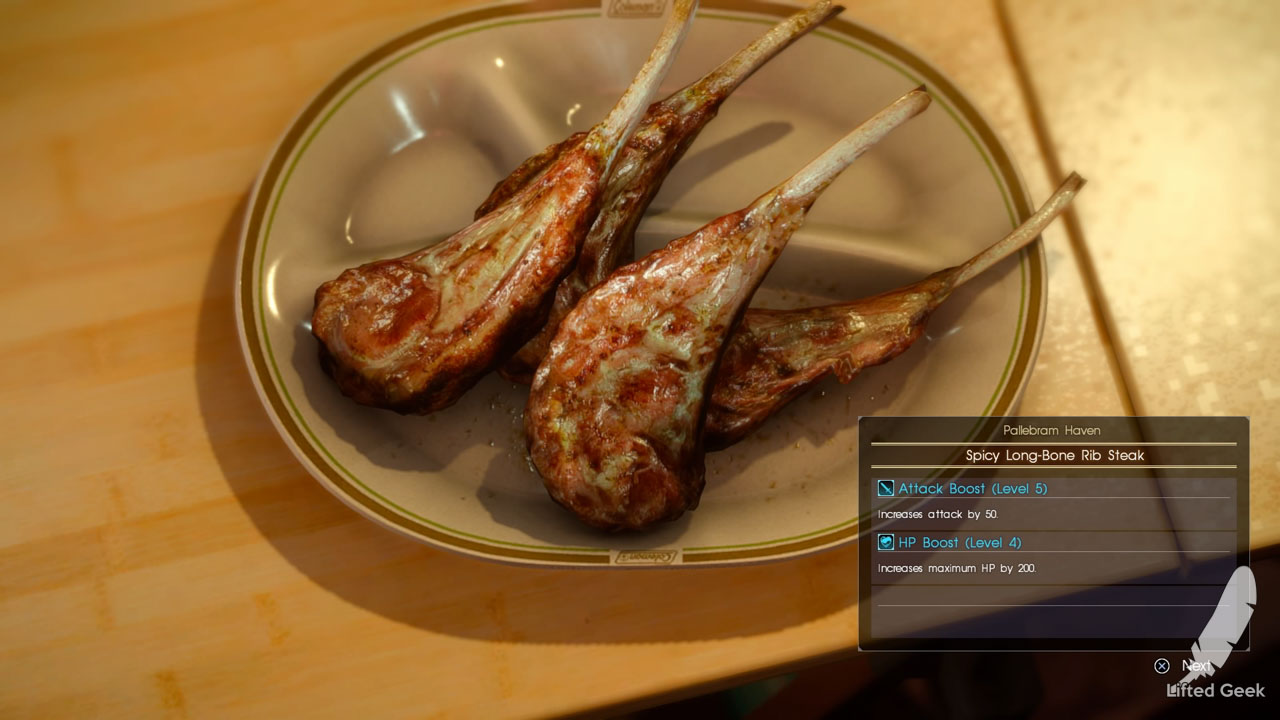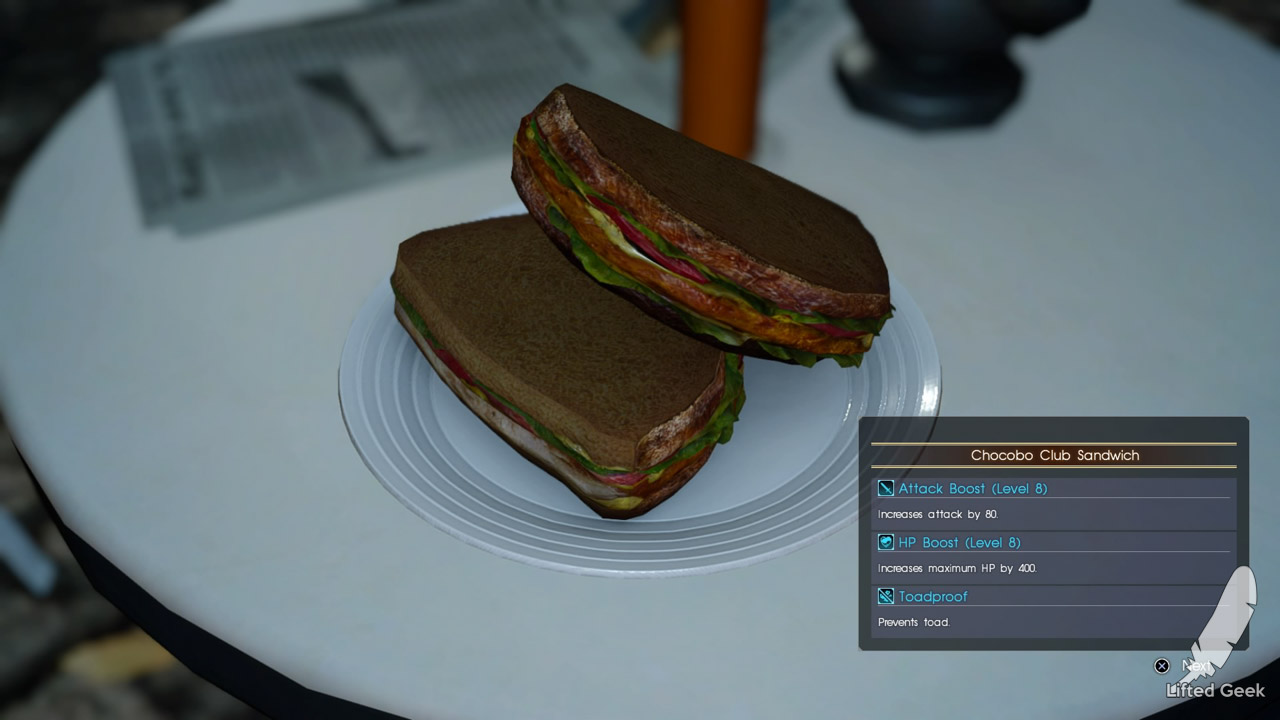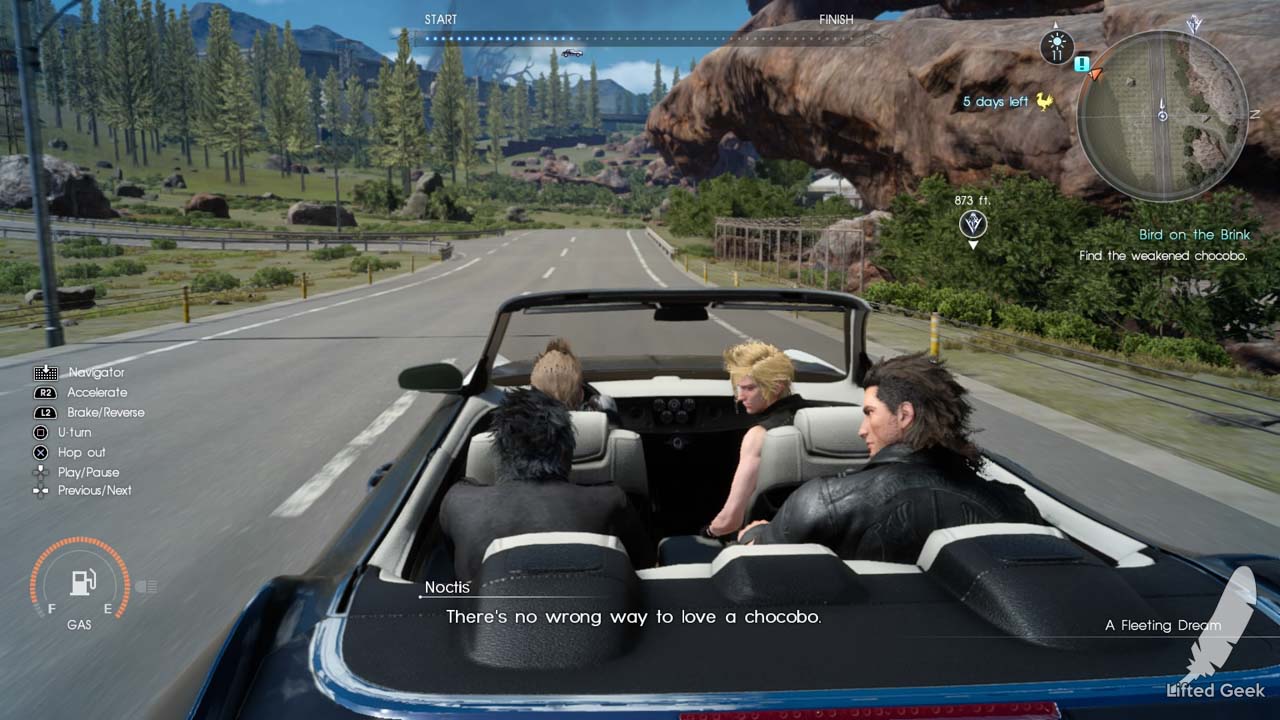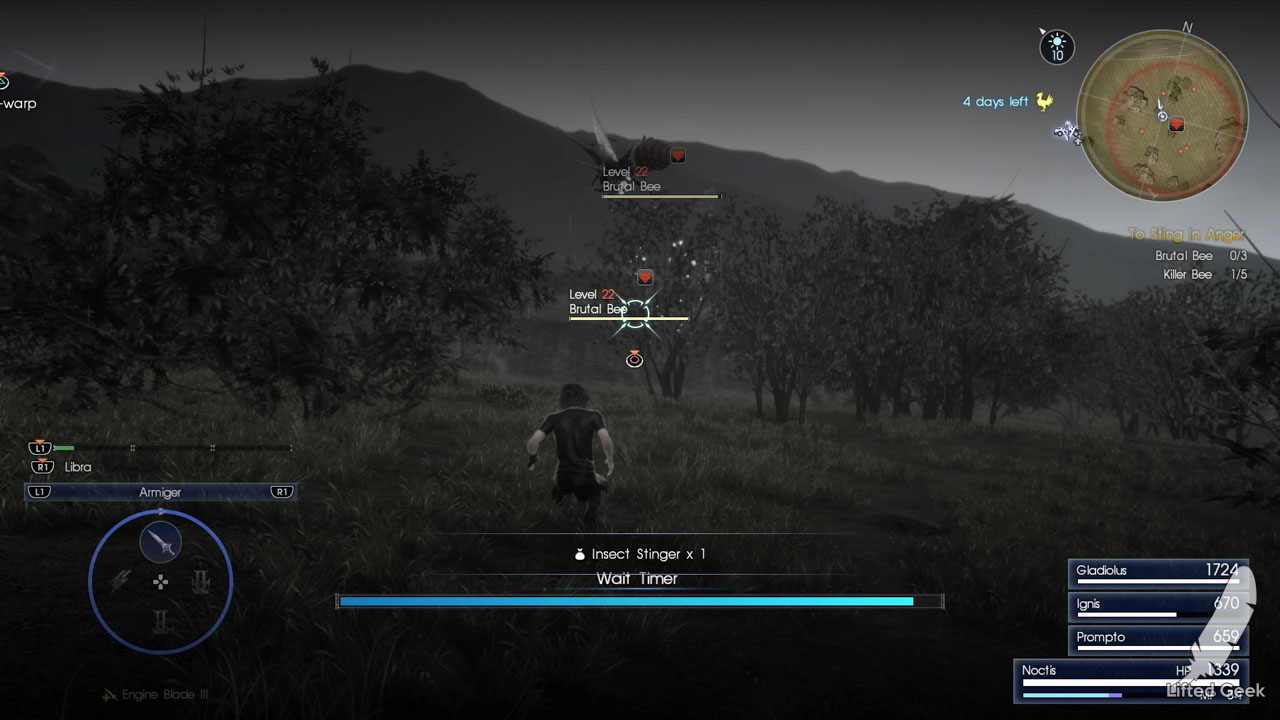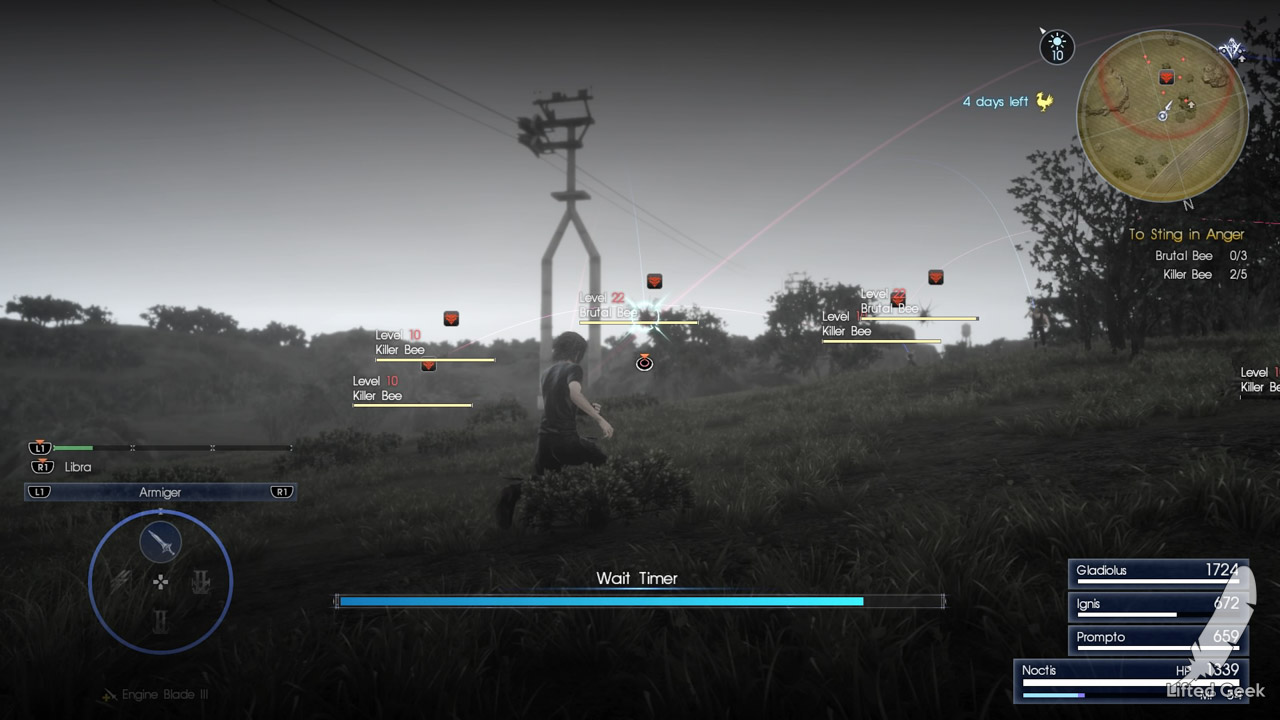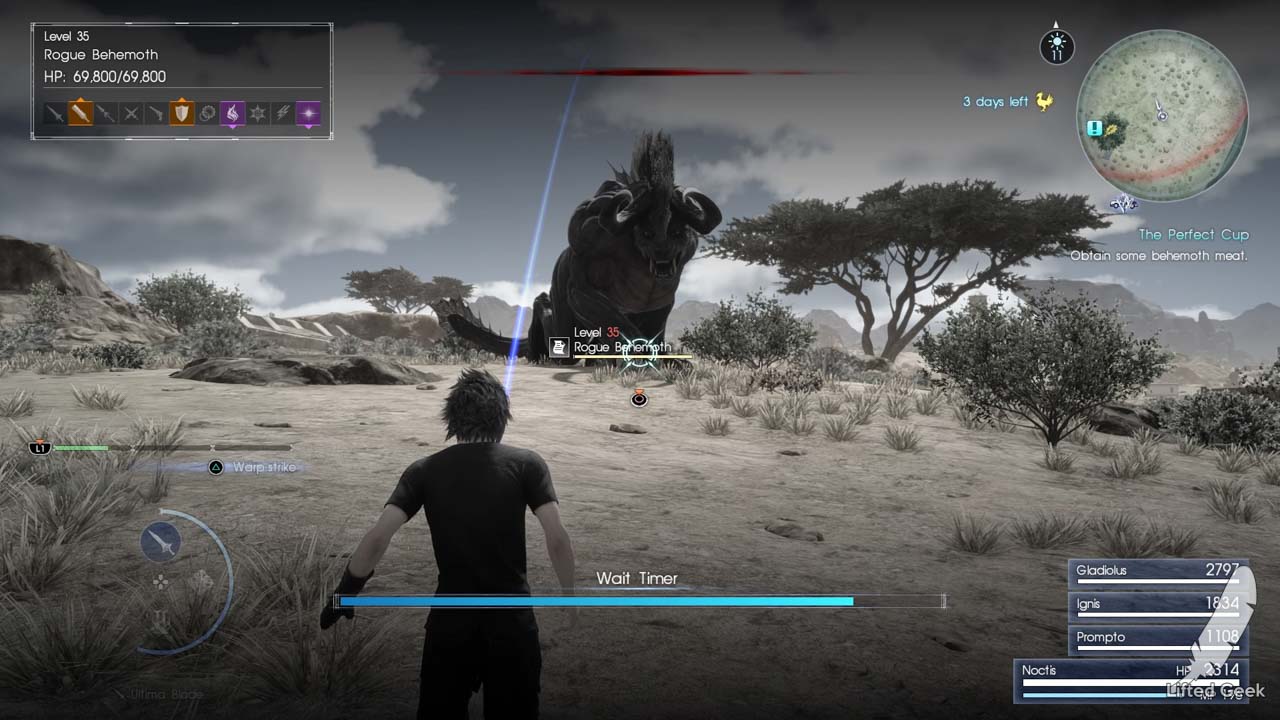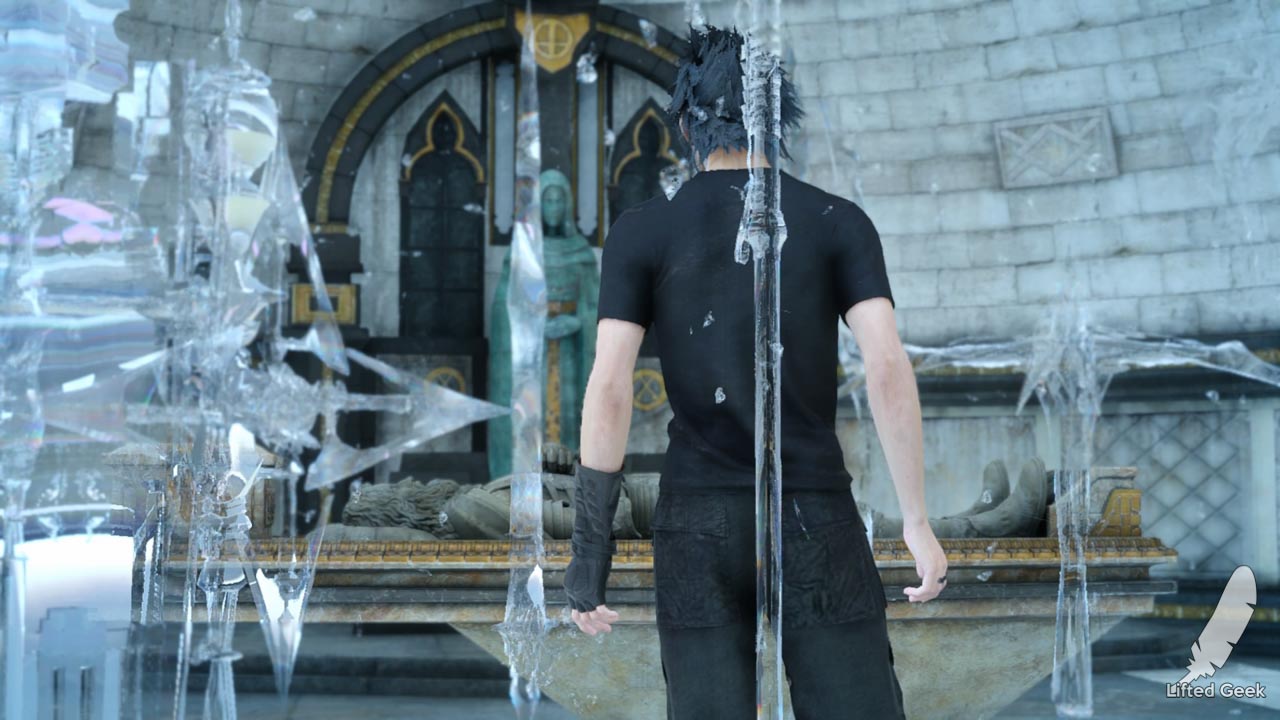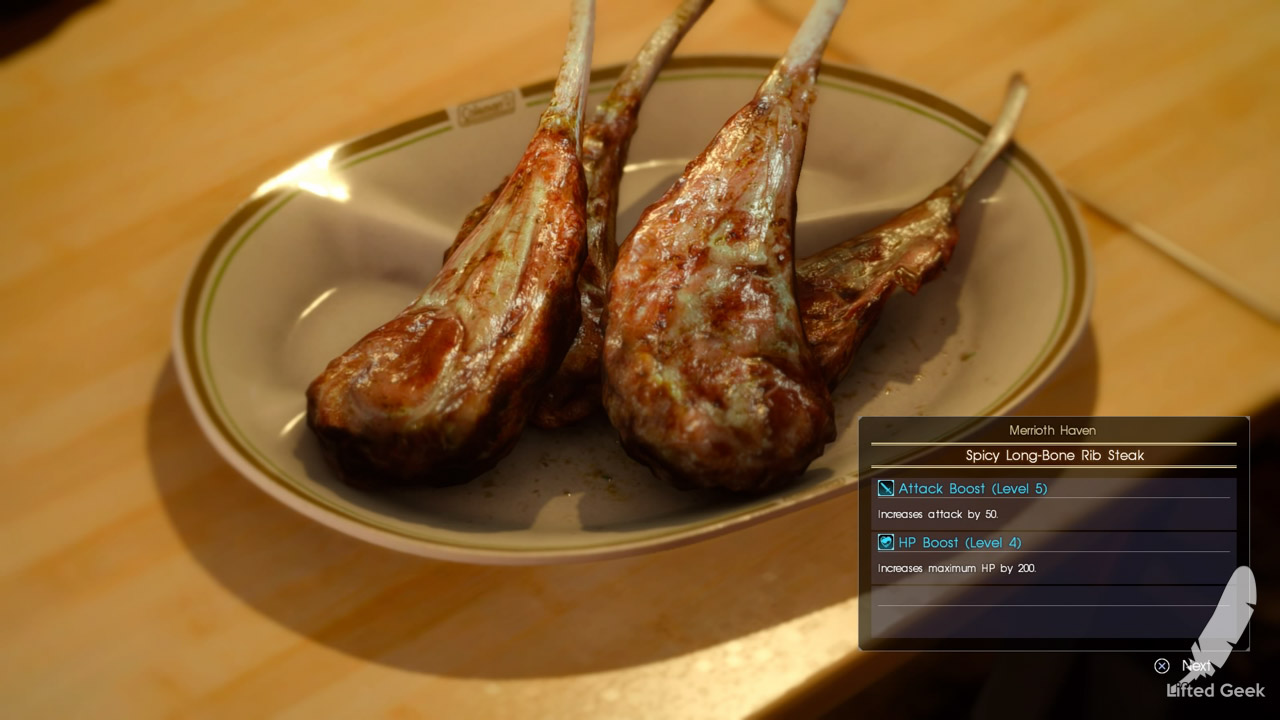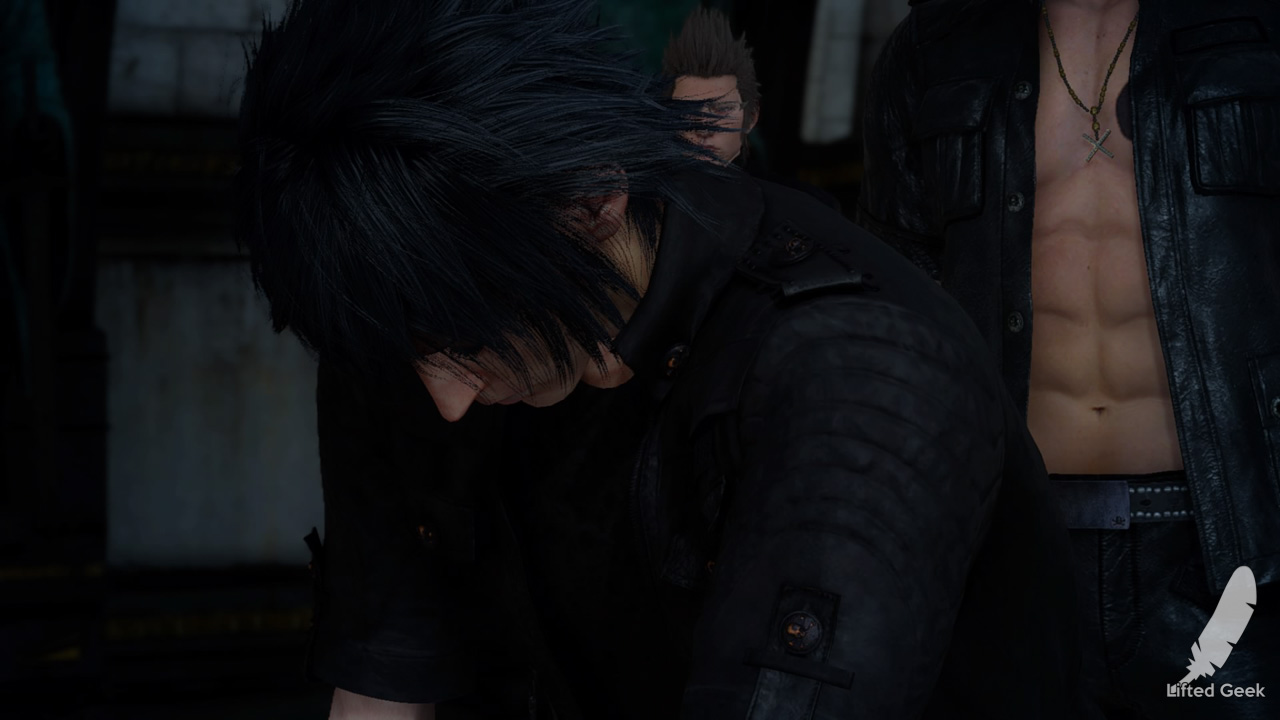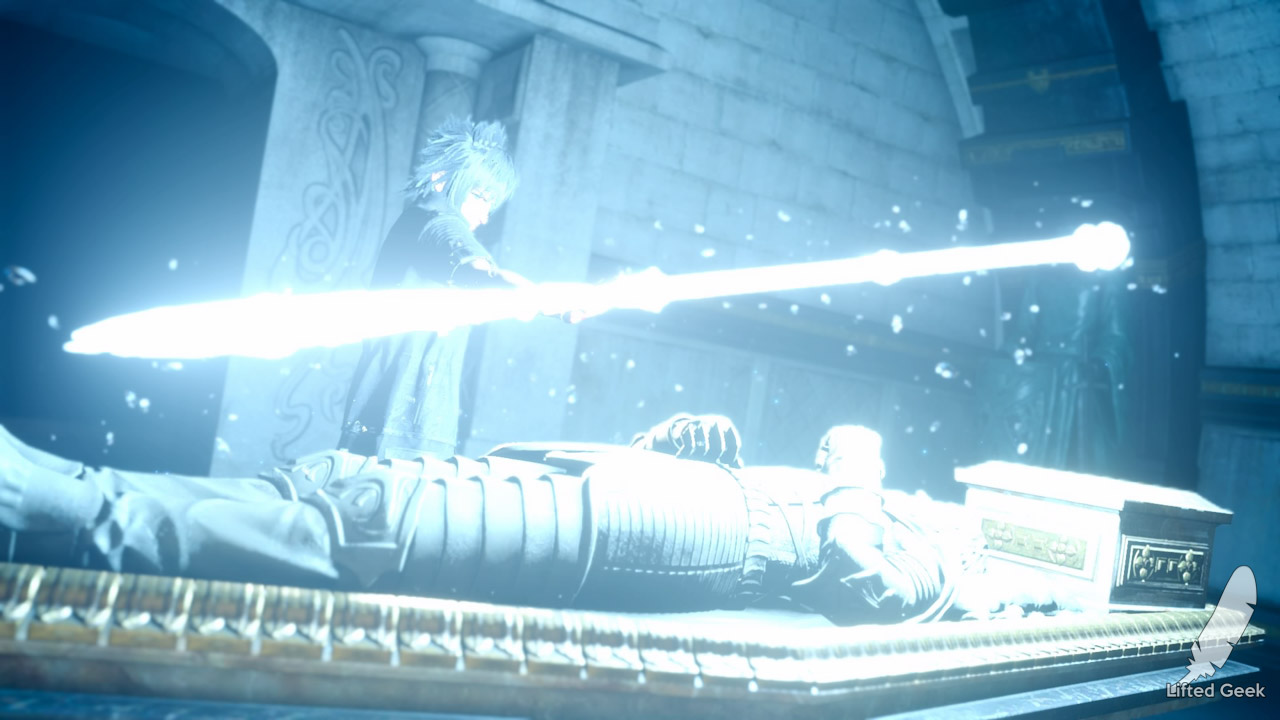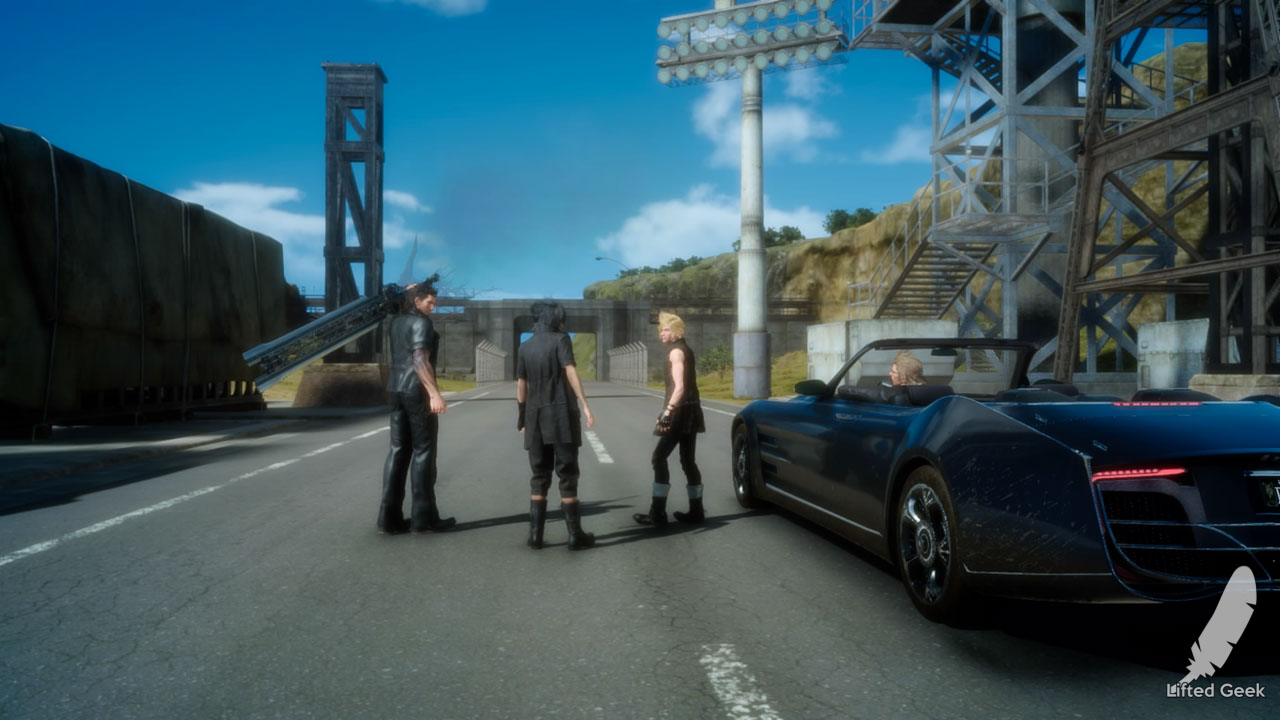Final Fantasy XV According to a Super-Fan (REVIEW)
written by Justin Prince (@prince_justin)
Ten years... it has been ten years since we received the very first look into the world Final Fantasy XV, though originally a spin-off story sharing similar themes to Final Fantasy XIII the title has evolve to become the next core installment in the Final Fantasy series… so the big question most people are asking… was it worth the wait?
Let’s not get too far ahead of ourselves here, this game is so big and so full of hype that it needs two reviews. When you first boot it up, the game displays the caption “A Final Fantasy For Fans and First Timers.” I have been a Final Fantasy fan from the early days, my very first Final Fantasy was Final Fantasy IV (originally Final Fantasy II) on the Super Nintendo. Jay is gonna be reviewing the game from his perspective, while he has played the series before… he wouldn’t describe himself as a super fan like I would of myself.
The story follows an aloof Prince, Noctis Lucis Caelum, as he travels the world with his three friends who just so happen to be members of the Crownsguard, an elite group of soldiers tasked with protecting Lucian royalty. The world is at war, the technologically advanced Empire of Niflheim is locked in conflict with the Kingdom of Lucis. Lucis has the last remaining Crystal in their possession, and the power-hungry Empire wants the Crystal. To encourage talks of peace, Niflheim proposes a fairly brazen peace treaty with Prince Noctis set to marry Lady Lunafreya of Tenebrae (a land under the Empire’s control). When the talks of peace devolve into outright war, Insomnia (the Crown City of Lucis) falls. What started as a Stag Night roadtrip for Noctis and his boys turns into a quest to reclaim his rightful throne.
Gameplay is set in a mostly open world, while the city of Insomnia has all the modern comforts of the world we live in today, much of the towns in Lucis are considerably smaller and not as technologically advanced as the Crown City. While parts of the world are blocked off until certain points in the story, Lucis is a veritable playground of things to do. In lieu of an Airship, traversing the land is achieved by means of driving around in their trusty Regalia, a luxury automobile that essentially gets you from point A to point B while letting you take in the sights of the world around you. In most of the outposts you’ll find a diner; it’s here in those diners that you can get information about the world around you, engage in hunts, or eat stat boosting meals.
Combat is the most compelling new part of the package; fast, frantic, and at times overwhelming… Final Fantasy XV finds a way to meld the traditions of turn-based combat with a widely engaging real-time combat system reminiscent of the Kingdom Hearts series and the Final Fantasy VII: Advent Children film. Unlike previous games, you don’t control your entire party, instead you control Noctis while the rest of your party acts independently. You attack and defend at the press of a button, defending allows you to either block/parry attacks or phase through attacks entirely at the cost of MP. The most thrilling aspects of combat is warping around the battlefield. At the press of a button, you can warp all over as long as you have sufficient MP. Lock onto an enemy and warp, you warp-strike to the enemy location… hitting them by surprise and making for the perfect opportunity to transition into a combo. There is an option to slow combat down, “Wait Mode” takes the fast combat of Final Fantasy XV and allows you to better strategize a plan of attack. Switching between the two modes does require popping into the settings menu, I advise using Wait Mode when you get a bit overwhelmed by the Active battle. Managing MP is key when fighting, you can instantly regenerate your MP by warping to warp points on the battlefield.
Noctis can equip up to four weapons at one time, switching between each weapon is mapped to your controller’s D-Pad. While you can equip most everything that your party members can equip, unique to Noctis are 13 Royal Arms. These Royal Arms play into the game’s overarching narrative with Noctis having to track down the tombs of his ancestors to obtain a unique weapon once wielded by one of the former Kings of Lucis. While powerful, using the Royal Arms comes with a unique Catch-22, each strike saps your HP so unless you are careful with how you attack and use restorative items… you can easily find yourself up a creek without a paddle.
“Final Fantasy XV is an experience that is full of what makes Final Fantasy so great”
It wouldn’t be a Final Fantasy game without magic, Final Fantasy XV gives magic usage a bit more power. Elemancy is the term for magic in the game, thanks to Noctis and his inherent power, he can extract elements of fire, blizzard, and thunder from natural deposits or from enemies (granted you are equipped with the right weapons). Using magic flasks, you create a consumable of sorts. Limited uses, a long cooldown between uses, but so much power. My first play through I rarely used magic, but in my second playthrough I made it a point to use it more frequently. The big payoff from magic made some tough encounters that much easier. The potency of your spells and how many spells you gain can be augmented as you level up or by combining various items with the spell. One major downside with using spells come from friendly fire, if you or any of your party members are nearby the blast radius when the spell hits the enemy it also hits allies. This wouldn’t be a problem if there was a command to pull back your team. Personally, I wished that they just removed the friendly fire aspect of using magic entirely. While it wasn’t that much of a problem to continually use restorative items to keep my party on its feet, I felt I used more than I needed in fights where I actively used my spells. Limiting the elements to three types did feel more streamlined in my opinion, but I wish they at least gave us earth magic as well.
Like magic, summons also get a brand new coat of paint. Playing into the main story, summons are guardian deities that look over the world of Eos, by the end of the game you will have in your control four summons; Titan, Ramuh, Leviathan, and Shiva. There are two others but they serve more as supplements to the story than a part of your arsenal. The trick to summoning them involve a combination of where you are and certain qualifications in battle. For example, Leviathan won’t show up if there isn’t a body of water nearby and Titan doesn’t show up if you are underground. Summoning them is random but given the circumstances, they manage to come along right at the perfect time. It seems fitting, since these summons are representations of the world’s deities, like a God, they can be a bit fickle.
There is very little hands-on control over how your AI party members act in battle. Despite this, they manage to do a good job backing up Noctis. You can use various techniques unique to each member of your boy-band. As they attack, your tech bar fills up to three bars. Your party member’s techniques act like mini-limit breaks. Depending on the level of the technique, you consume one bar or all three. These can help turn the tide in battle with some of them allowing Noctis to follow up an attack for further damage. Using them whenever available since the tech bar charge only lasts as long as the battle and doesn’t carry over to the next. As for our main protagonist, he has a sort of limit break of his own. Once you collect enough of your ancestor’s Royal Arms, you unlock the Amiger ability. This is another bar that continually fills up and when activated puts Noctis in an altered state where he can wield all his Royal Arms at once in a fantastical array of swinging blades.
Leveling up receives a big change in this installment. You still earn EXP from defeating enemies, completing story quests and side quests. But the big difference is that your EXP isn’t applied to you until you sleep. There are two choices, you can pay to spend the night at an Inn or set up camp in the wilderness. Both offer unique bonuses so diversifying your rest between Inns and camping depend on the needs of the day. Sleeping at a camp tallies your EXP and Ignis can cook a stat boosting meal that can help turn the tide in combat during the next day. Staying at an Inn doesn’t offer the status boosting meal, instead your EXP tallied is multiplied, most times by 1.3 times to as large as 3 times the EXP. This can help you level up very quickly, just be prepared to pay the premium price on premium lodgings. Ascension is the other way to develop your characters, giving the player more control over it. From boosting your character stats to allowing characters to equip more than one accessory. You trade AP to activate these nodes in the Ascension menu, reminds me of the Sphere Grid from Final Fantasy X.
Though I plugged hours into this adventure, most of that time I found was spent exploring the land and doing as many sidequests as I could. The core story itself is actually shorter than I expected. Spanning 15 chapters, most of the content occurs between chapters 1 and 8. Once you hit chapter 9 to the end, the story takes on a more linear approach without the possibility of exploring the open world as a distraction. What I did like about how the game worked was how they handled exploring the open world after chapter 8. In previous games, access to the open world begins when you get your Airship. I remember a moment in Final Fantasy VII where you and your party is at the final save point in the Northern Cave, but because of the way the game is designed, you could back out and jump into the open world again. It’s like “sure, we have to save the world… but let’s go to the Gold Saucer for a bit and race some Chocobos.” Ridiculous eh? Instead, after chapter 8, when you pop by an Inn another option pops up to “Call Umbra” and take a stroll down memory lane. This transports you back to past Lucis and allows you to continue leveling up and completing sidequests as if they occurred before chapter 9. It’s an interesting mechanic and one that makes infinitely more sense than the way they handled it in previous games. Despite how much, or how little, you complete in the world before chapter 9… the story assumes you’ve done everything by that point.
Over the grand scheme of the total package, I was more so satisfied with the core story. They did a great job with keeping their focus on Noctis and his experience. There are very few moments the occur where Noctis isn’t involved. This ends up creating some gaps in the overall story. There are periods of the story where more exposition would have been appreciated. What was Lunafreya doing the whole time, during a point that the other party members weren’t together… what was going on? There are some clear gaps that I wished they explained better. The most criminal of these was Ravus and the Empire, no spoilers but the state of the Empire goes from overpowered invading force to something else by the time you reach the 13th chapter. As for the big bad, I have not be this invested in an enemy since Sephiroth or Kefka. Ardyn Izunia makes a great villain, and I am so glad that they explored his backstory thoroughly.
VERDICT:
The big question… was it worth the wait… did it deliver? I say a resounding YES! Final Fantasy XV is an experience that is full of what makes Final Fantasy so great. A story that starts from humble origins exploding into a planet wide adventure of epic proportions, a strong cast of characters that enrich the story, and all the makings of a fantasy. This… is… Final Fantasy. Despite losing its way, this feels like a chance to bring Final Fantasy back on top in an age when JRPGs feel stale. The future looks bright for Final Fantasy, and with the fifteenth installment it feels like a return to its former greatness.







